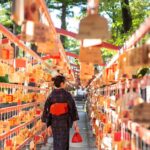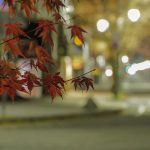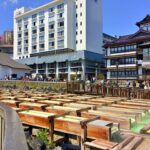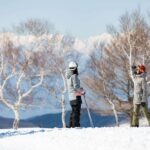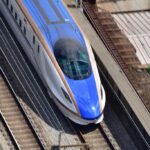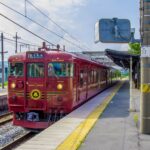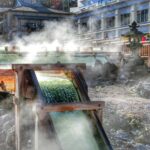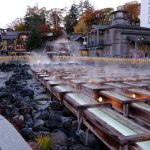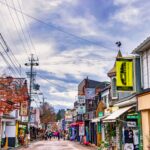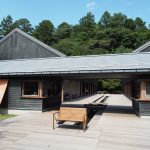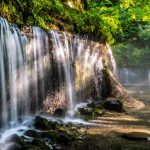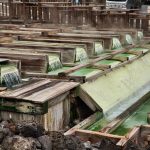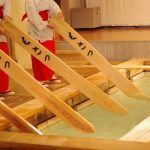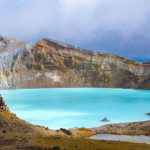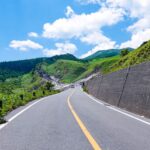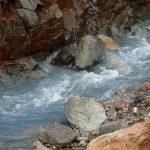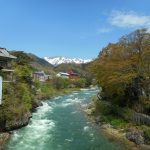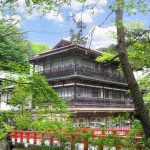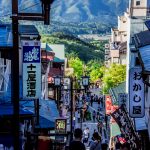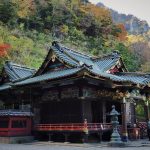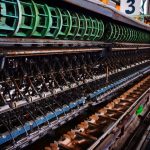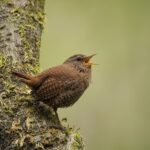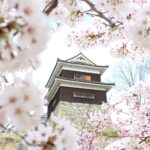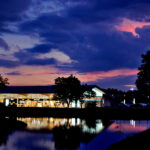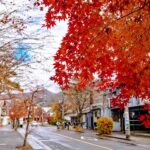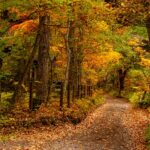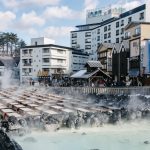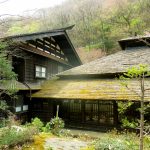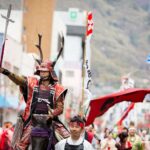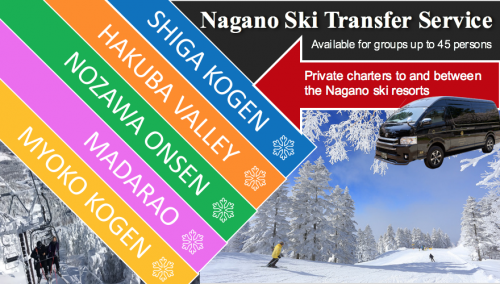30 Things to Do Around Karuizawa & Where to Stay
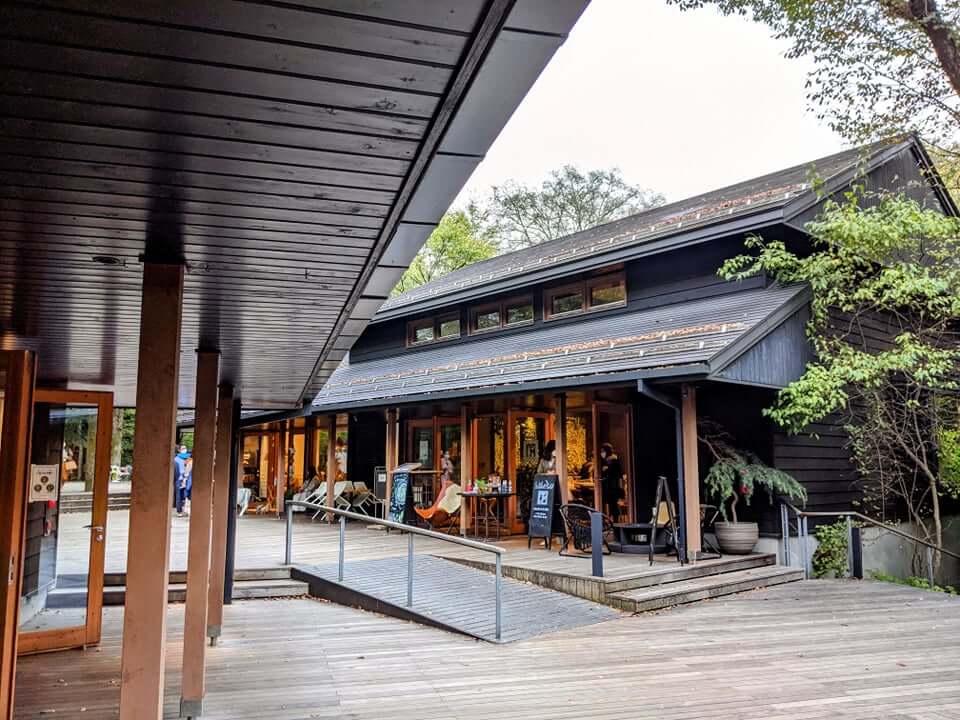
Only 70-minutes from Tokyo using the Hokuriku Shinkansen, Karuizawa is one of Japan’s oldest and most famous mountain resort towns. Sitting around 1000 metres above sea level, Karuizawa enjoys a notably cooler climate than the capital and as such, has offers escape from the heat and humidity of summer. Popular with Tokyoites, Karuizawa offers an excellent range of shopping, dining and accommodation set within tranquil alpine forests. On this page you will find the following information:
— Best Things to Do Around Karuizawa
— Best Places to Stay When Visiting Karuizawa
— Tours & Charters from Karuizawa
Long popular with Japanese, Karuizawa is now coming to the attention of international visitors who have discovered all that it has to offer. While it won’t appeal to everyone, the expansive Prince Shopping Plaza offers some of Japan’s best retail therapy and high-end accommodation at the adjoining Prince Hotels. In winter, visitors can also enjoy Karuizawa Prince Snow Resort – a combination that attracts an increasing number of visitors over the Christmas and New Year Period. Just north of the station, the Old Ginza area is the traditional heart of the town and where you will find boutique shops, fine dining, bars and other lovely surprises. Offering a quaint charm in contrast to the modern commercialism of the shopping plaza, this area of Karuizawa also boasts some fantastic ‘ryokan’ (traditional guesthouses).
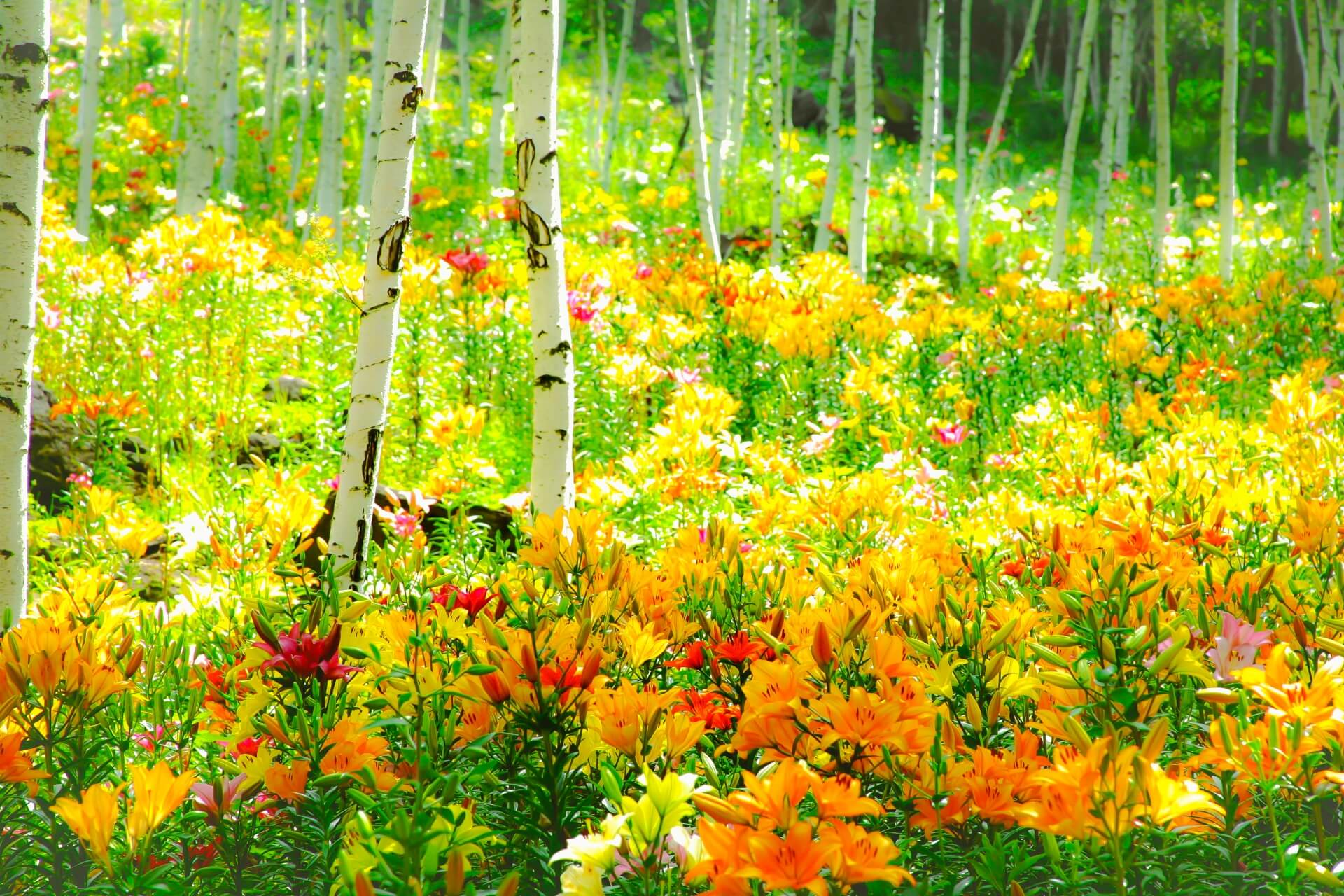
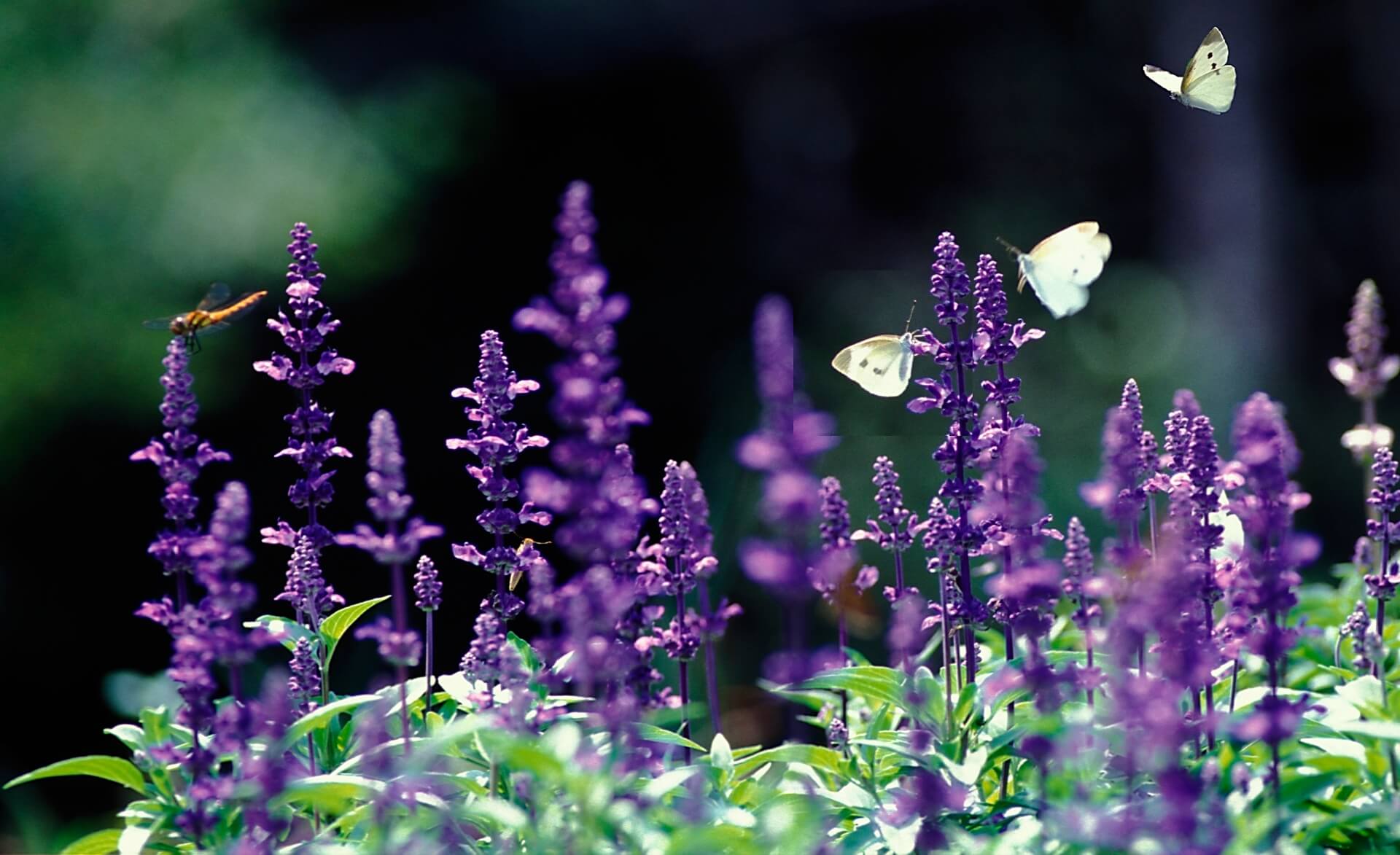
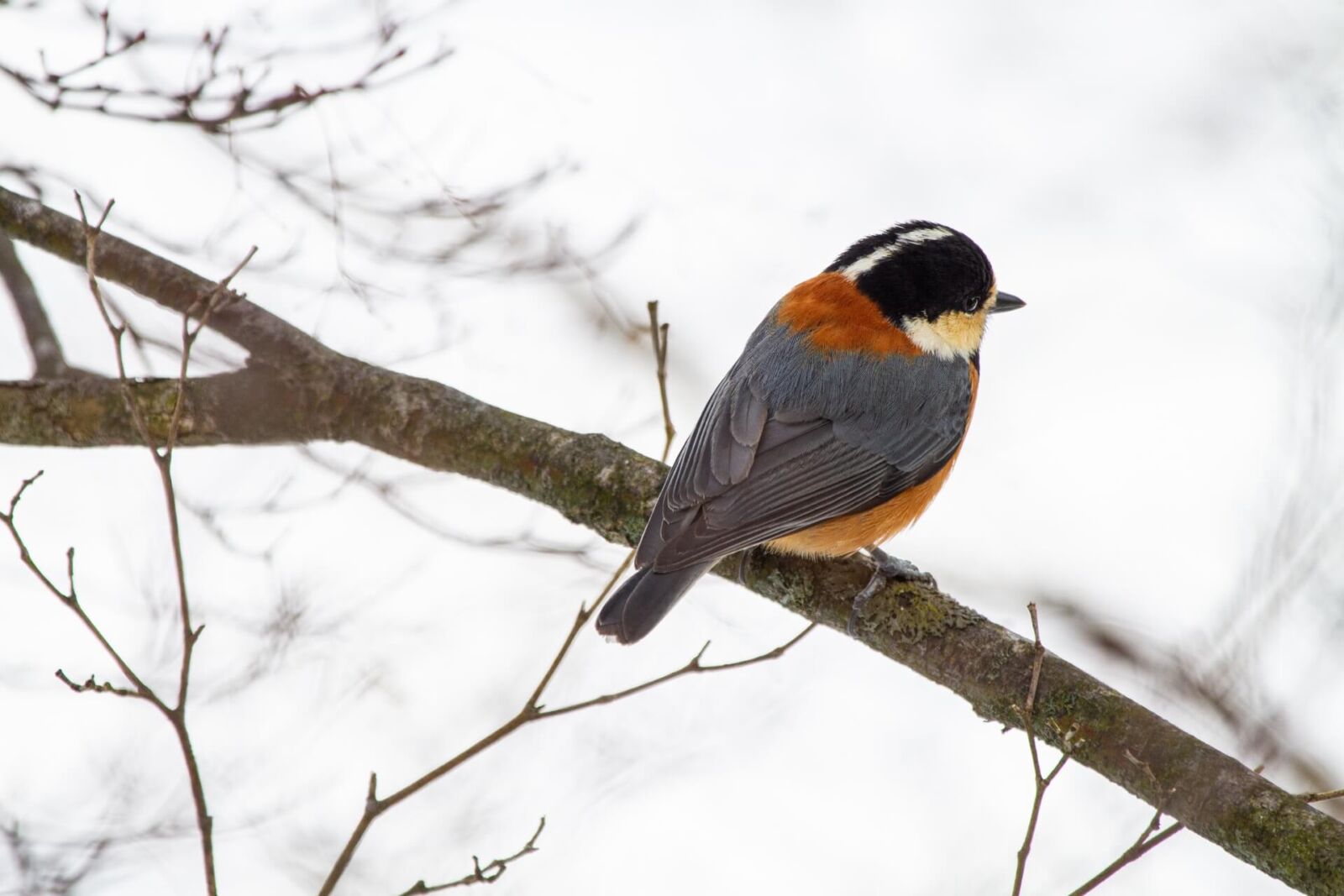

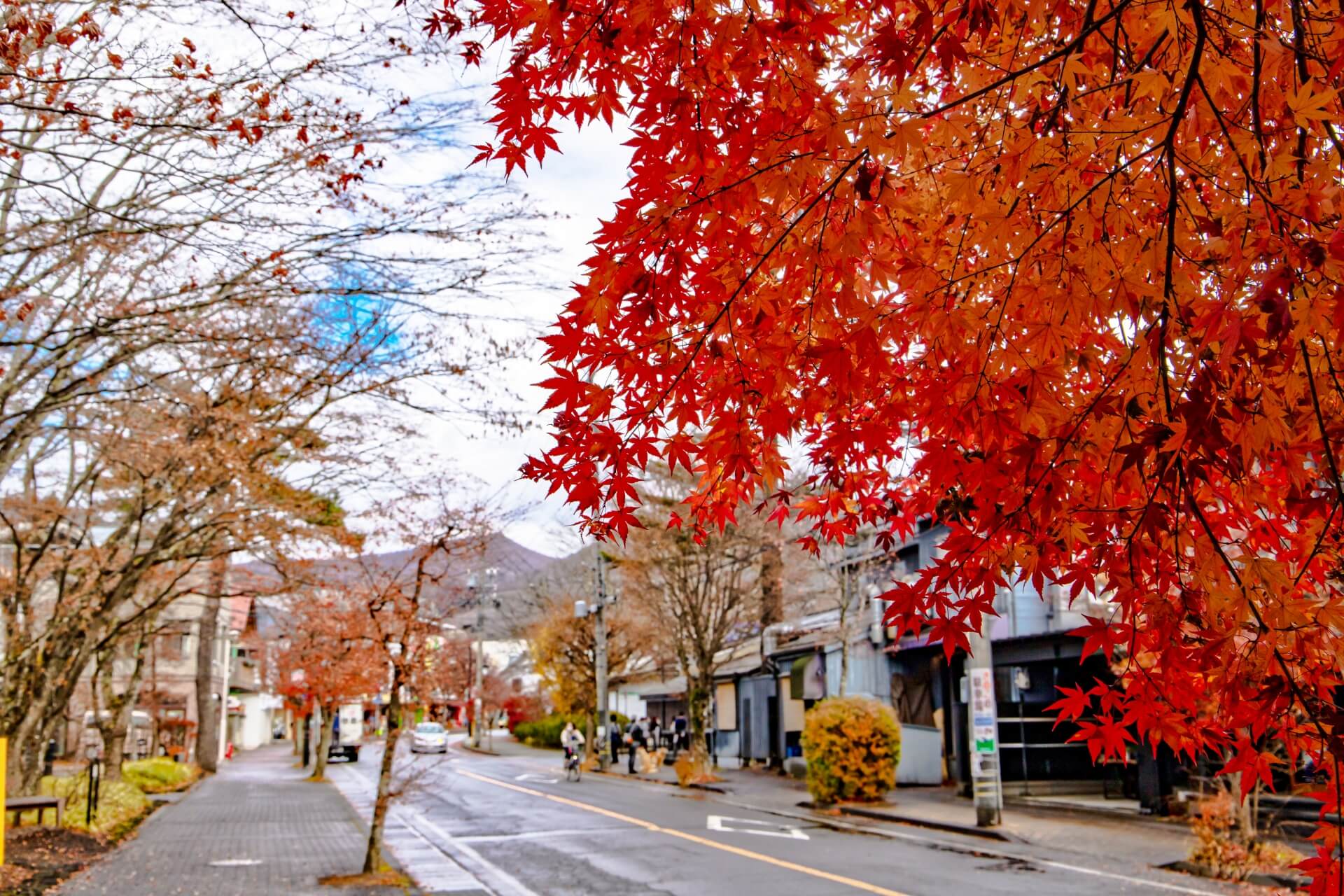
Autumn is an especially good time of year to visit, when the streets and surrounding forests of Karuizawa are awash with colour. To the west of the station and Old Ginza area, you can enjoy the popular Harunire Terrace and the walking trails of the Karuizawa Wild Bird Sanctuary – an ideal place to escape the summer heat or enjoy the autumn leaves from late-September to November.
WHERE IS KARUIZAWA?
Karuizawa is located around 70KM / 1.5 to 2-hours to the south-east of Nagano and 170KM / 2.5 hour drive to the north-west of Tokyo. As a stop on the Hokuriku Shinkansen line, Karuizawa Station is most easily reached using the train from Nagano or Tokyo – taking around 30-minutes and 65 to 75-minutes respectively, from those staring points. Karuizawa sits around 1000 metres above sea level, blessing it with a cool alpine climate and welcome escape from the heat and humidity of summer. As such, Karuizawa is one of Japan’s most popular resort towns with many Tokyoites heading there for holidays or day-trips from the capital. The town boasts some excellent hotels and guesthouses, restaurants and cafes, shopping, museums and galleries and sits within easy reach of Joshinetsu Kogen National Park and one of Japan’s most famous hot spring towns, Kusatsu Onsen.
BEST THINGS TO DO AROUND KARUIZAWA
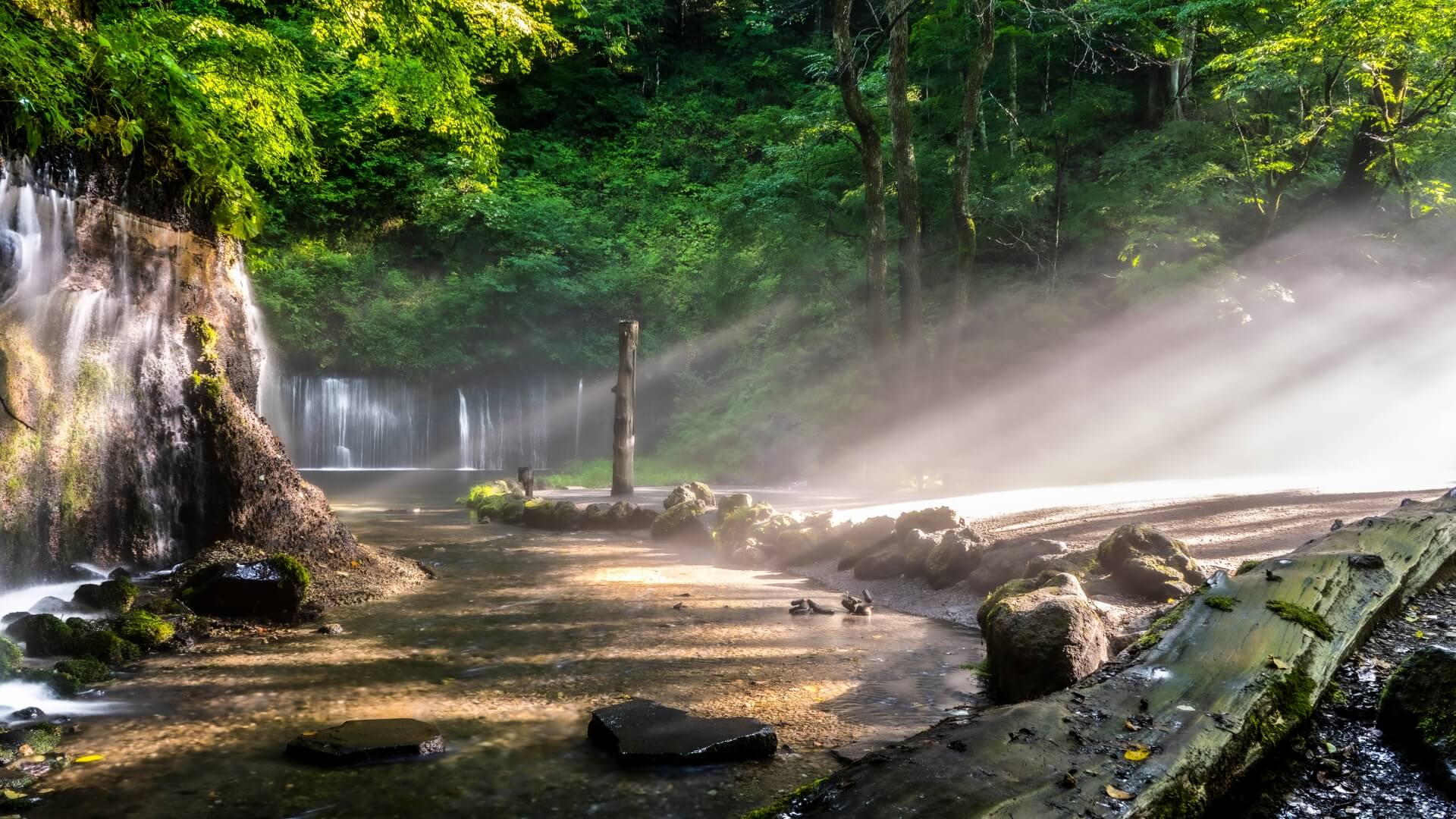
Karuizawa is one of Japan’s most famous resort towns offering lots of reasons to visit. Within easy reach of Tokyo, both Japanese and international visitors flock to Karuizawa to enjoy its cool alpine climate, shopping, restaurants, museum, galleries and array of great accommodation. Sitting on the boundary of the Joshinetsu Kogen National Park, visitors headed to Karuizawa can also enjoy nearby destinations including Mount Asama, Mount Kusatsu-Shirane and multiple hot spring towns including Kusatsu Onsen. Here are our suggestions of the best things on offer in Karuizawa:
1 / PRINCE SHOPPING PLAZA / all year round
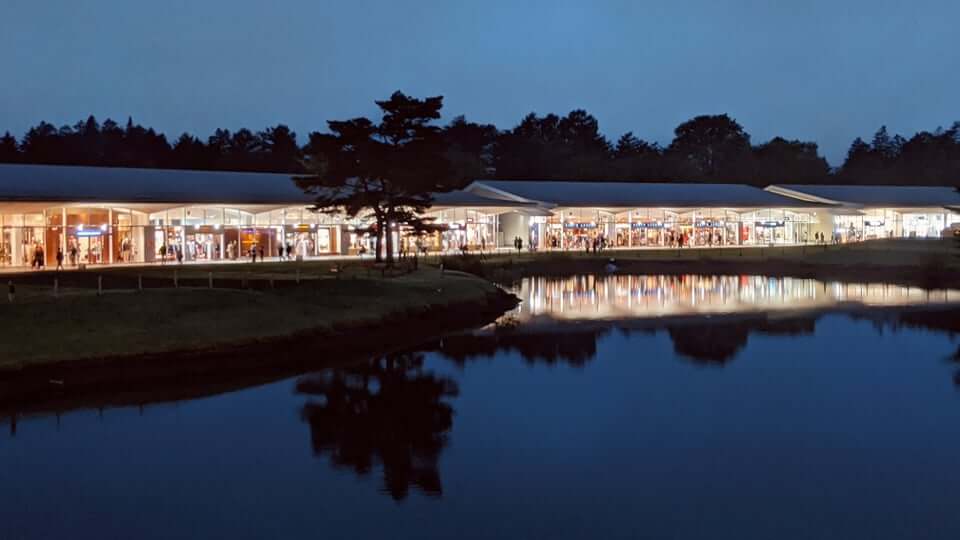
Prince Shopping Plaza in Karuizawa is one of Japan’s largest outlet shopping malls, offering a huge range of fashion and other goods to the public at wholesale factory prices. The mix of shops on offer is somewhat eclectic too. Big name brands such as Adidas, Coach and Disney sit alongside local fashion labels, handmade goods and souvenir stores.

There’s also no shortage of food and drink options too, with Chinese, European and Japanese restaurant options joining the obligatory coffee shops, delis and cafes. Tourists will also be glad to know that many of the stores in Prince Shopping Plaza allow tax free shopping and accept all major credit cards. Paying by credit card can sometimes be problematic in what is still very much a cash-based society here in Japan. The Plaza also has an onsite currency exchange making it easy to get hold of Japanese yen if you need to.
2 / OLD KARUIZAWA GINZA SHOPPING STREET / all year round
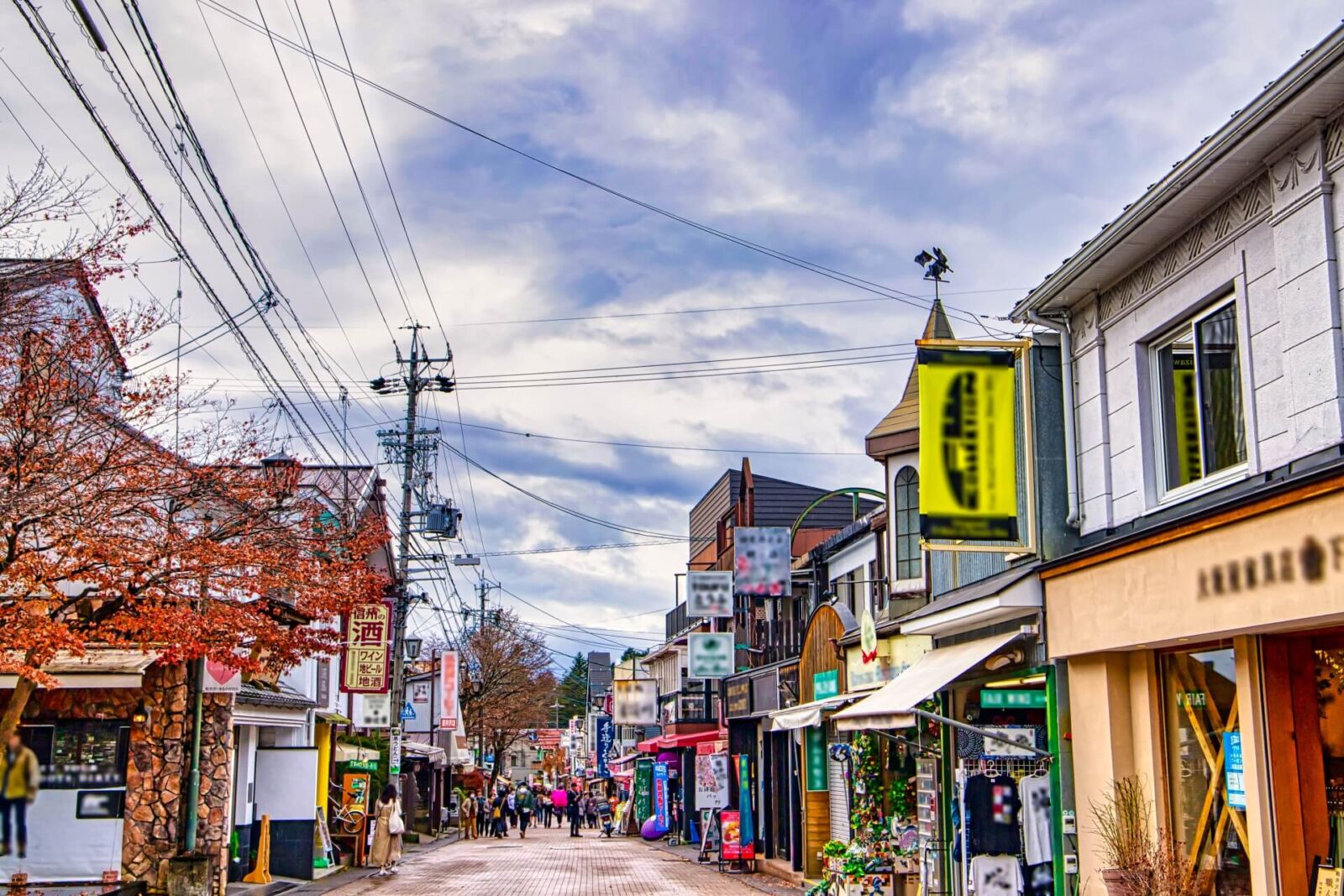
Whilst the Prince Shopping Plaza offers the very best in modern conveniences, maybe you’re looking for something a little more ‘old school’ and authentic? If that’s the case, then you need look no further than Old Karuizawa Ginza Shopping Street. Whilst much of Karuizawa has undergone a certain level of renewal and urbanization in recent times, the Ginza Shopping Street has, thankfully, remained unspoiled. Indeed the street continues to enjoy international recognition to this day, thanks to the vote of confidence it received from The Beatles’ John Lennon, when he visited it during one of his many trips to Japan alongside his partner Yoko Ono. However, you don’t need to be one of the all-time legends of popular music to enjoy this charming little area. Among the handicraft shops, various other homemade goods and local fashion stores, you will also find some great little cafes, where you can sit back, relax and “imagine” a world of possibilities.
3 / HARUNIRE TERRACE / all year round
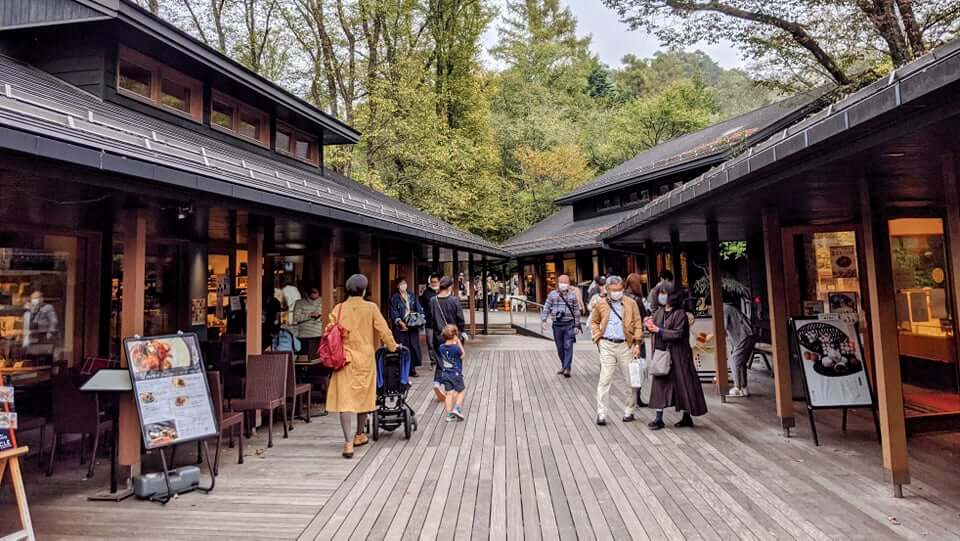
Located in Naka-Karuizawa, approximately 4km to the west of the town centre, Harunire Terrace is a small and stylish dining and shopping area surrounded by picturesque forest. Restaurants and boutique stores run parallel to each other along a wooden terrace. The overall design of Harunire Terrace embraces the use of timber, allowing it to blend into its natural setting with ease. A range of food and craft shops complement restaurants and cafes, with walking trails leading to nearby Hoshino Onsen Tombo-no-Yu and Karuizawa Wild Bird Sanctuary – see below. Always popular, restaurants can be busy on weekends and holidays so it’s worth going early if you can.
4 / HOSHINO ONSEN TOMBO-NO-YU / all year round

The healing and health-boosting qualities of the legendary ‘onsen’ (hot springs) are known all across Japan. Hoshino Onsen Tombo-no-Yu in Naka-Karuizawa is a relatively new addition to this legend, with these springs only being used by the locals since 1916. However, their hydrogen carbonate and chloride enthused waters are said to help alleviate a whole range of human ills, from arthritis to headaches, to nerves and anxiety. In any case, as this writer will testify, nothing refreshes both the body and the spirit quite like a good long soak in an onsen. Tombo-no-Yu offers both indoor and outdoor baths, with admission JPY1300 for adults and JPY750 for children.
5 / KARUIZAWA WILD BIRD SANCTUARY / all year round
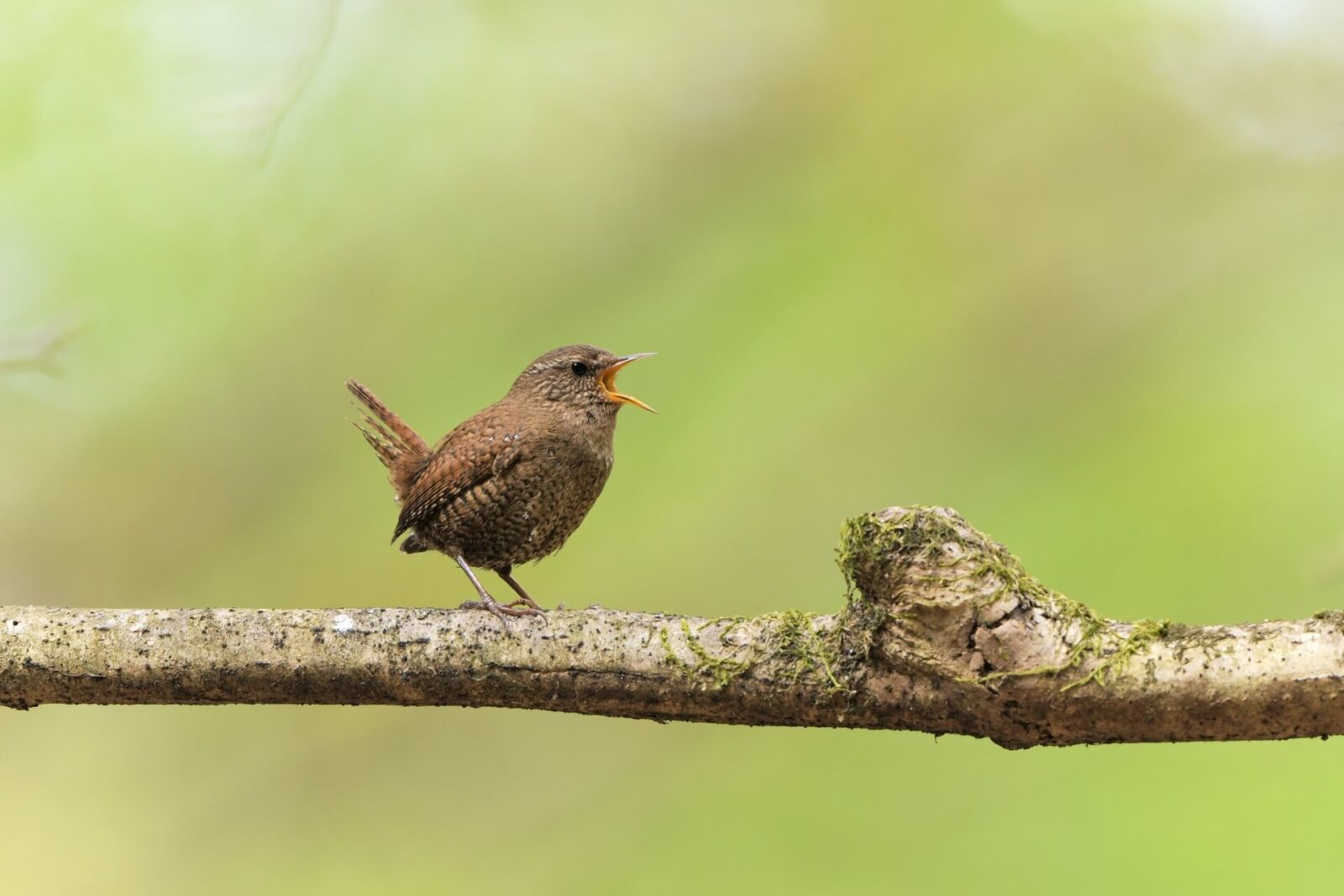
Located next to Hoshino Onsen Tombo-no-Yu, Karuizawa Wild Bird Sanctuary is an open forested area of around 100 hectares, criss-crossed by walking trails and home to at least one hundred species of birds. The trails of the sanctuary can be enjoyed free-of-charge with tours The Visitors Center includes the Picchio Wildlife Research Center and operates guided tours including a two-hour ‘Nature Watching Tour’ from April to November, a ‘Giant Flying Squirrels Tour’ in the evening from March to November and a ‘Mountain Bike Tour’ from spring to mid-summer (fees apply). Tours are delivered in Japanese with English-interpreters available at an additional fee meaning that for international visitors, the sanctuary will be most appealing as a destination to wander and explore for yourself. Birdlife includes native pheasants, woodpeckers, wagtails, owls and more while the forests are known for their population of large ‘flying squirrels’ and other animals including deer and ‘kamoshika’ (Japanese serow).
6 / SHIRAITO FALLS / best: May to November
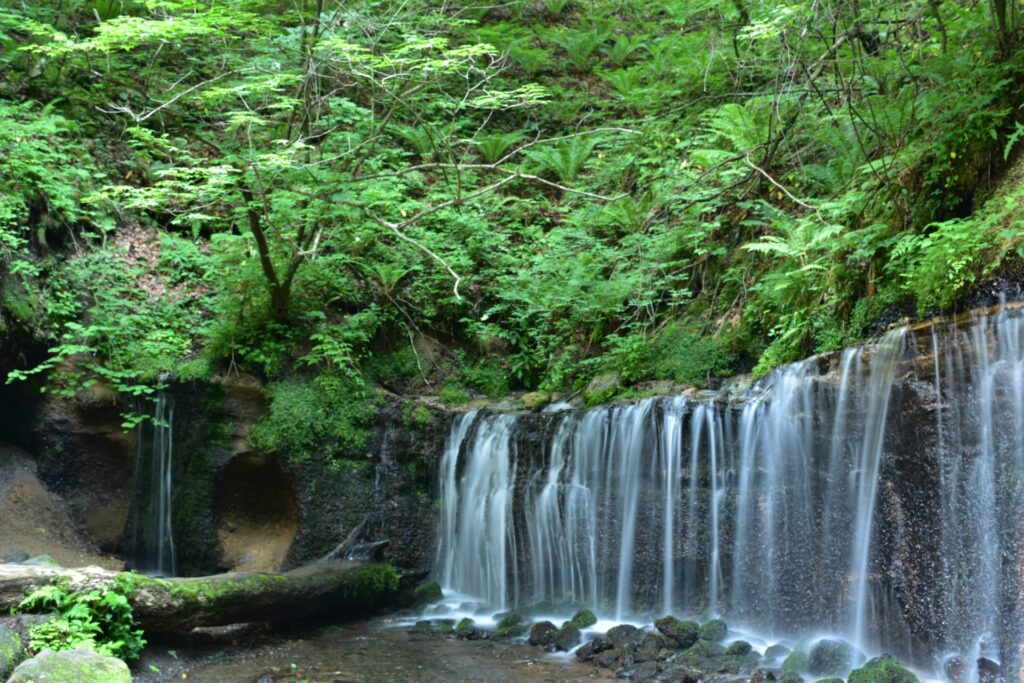
Shiraito Falls is a three meter high waterfall, spanning some seventy meters across. The name ‘Shiraito’ literally translates into English as ‘White Threads’ which is quite appropriate when you see how the wispy, white waters of the falls mingle and coalesce as they fall into the lake below. The falls are open to the public all year round, but it is debatable as to when is actually the best time to go there. Many say that summer is the best, when the lush vegetation surrounding the falls is at its peak while others prefer the coloured beauty of autumn. There is a direct bus that leaves every 30 minutes or so from Karuizawa Station and takes about 25 minutes to reach the falls. Get off at Shiraito no Taki bus stop and the falls are about 5 minutes away on foot.
7 / KUMODA POND / best: May to November
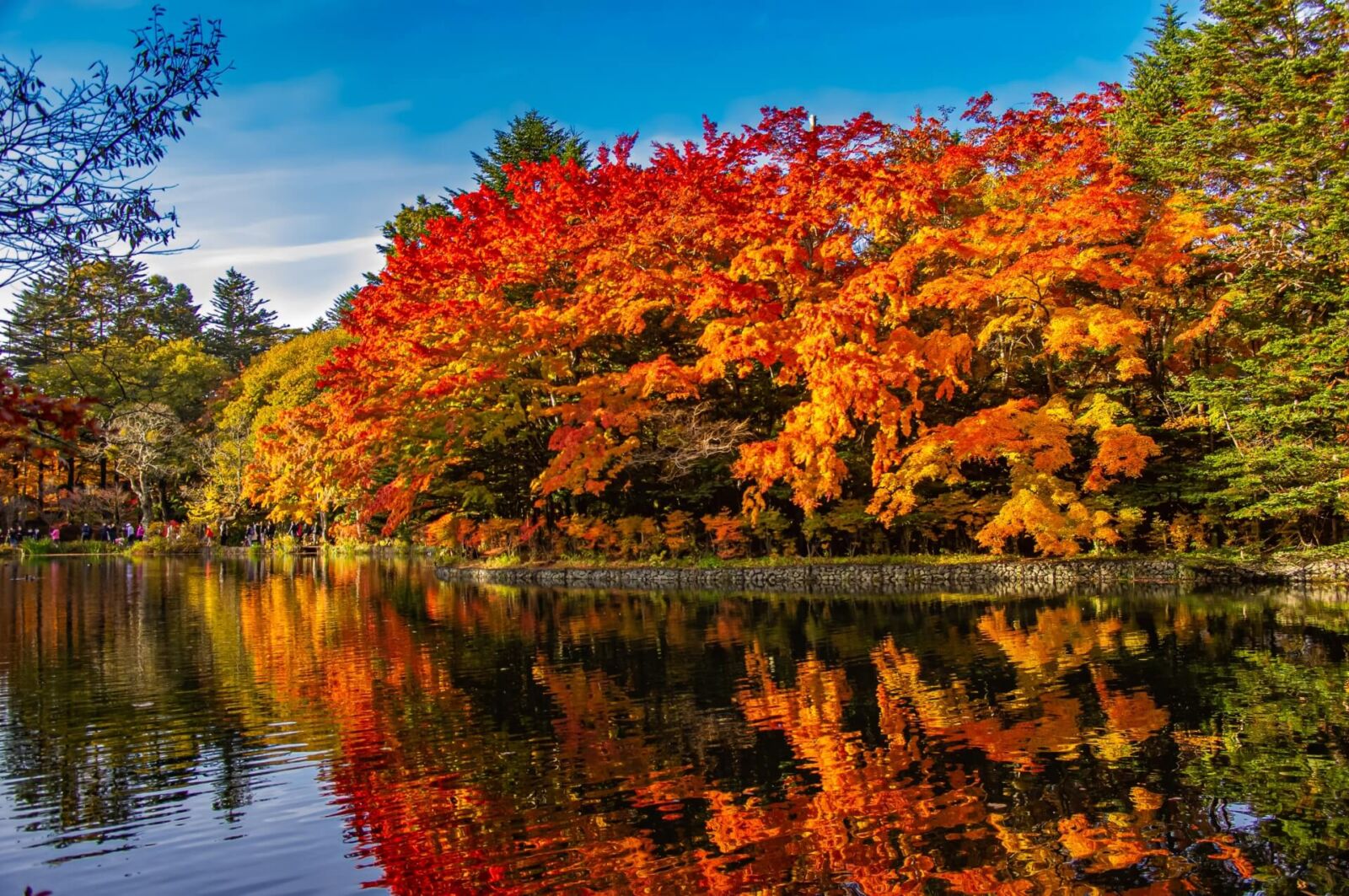
Located nearby the Old Ginza area of town and around 20-minutes walk from Karuizawa Station, Kumoda Pond is one of the best spots in town to enjoy the autumn leaves. On a clear and calm day, Kumoda Pond offers a striking mirroring effect when the surrounding greenery is reflected in the pond’s clear and unspoiled waters. The entire pond is also encircled with a boardwalk, making this the perfect place to enjoy a peaceful summer stroll, or perhaps pull up a chair and take some time out from the stresses and strains of daily life. The pond is also popular with cyclists and nature lovers. If you’re lucky, one of the families of ducks who call the lake their home may even come over to say hello.
8 / ENJOY ‘KOYO’ IN AUTUMN / late-September to November
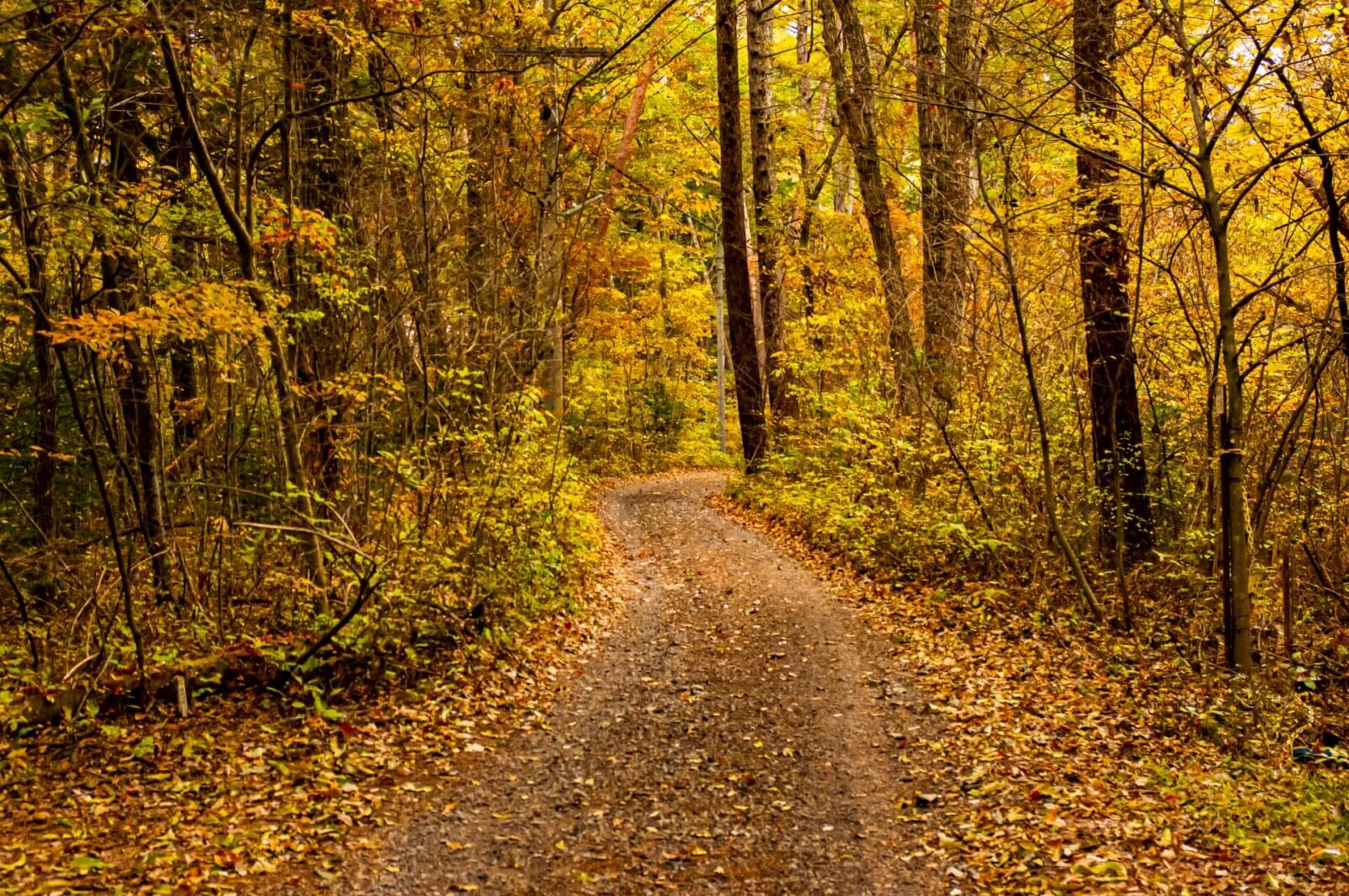
Known as ‘koyo’ in Japanese, autumn leaves are cherished for their fleeting and fragile beauty in a manner much like cherry blossoms. Karuizawa is one of the best spots in Central Japan to enjoy the leaves, which thanks to the town’s higher elevation at around 1000 metres above sea level, come earlier than most other areas. Our ‘Autumn Leaves’ main page has some tips and suggestions of where to find the best leaves across the region. For visitors headed to Karuizawa, we suggest starting at Shiraito Falls and Kumoda Pond – as described above.
9 / KARUIZAWA SNOW RESORT / November to March
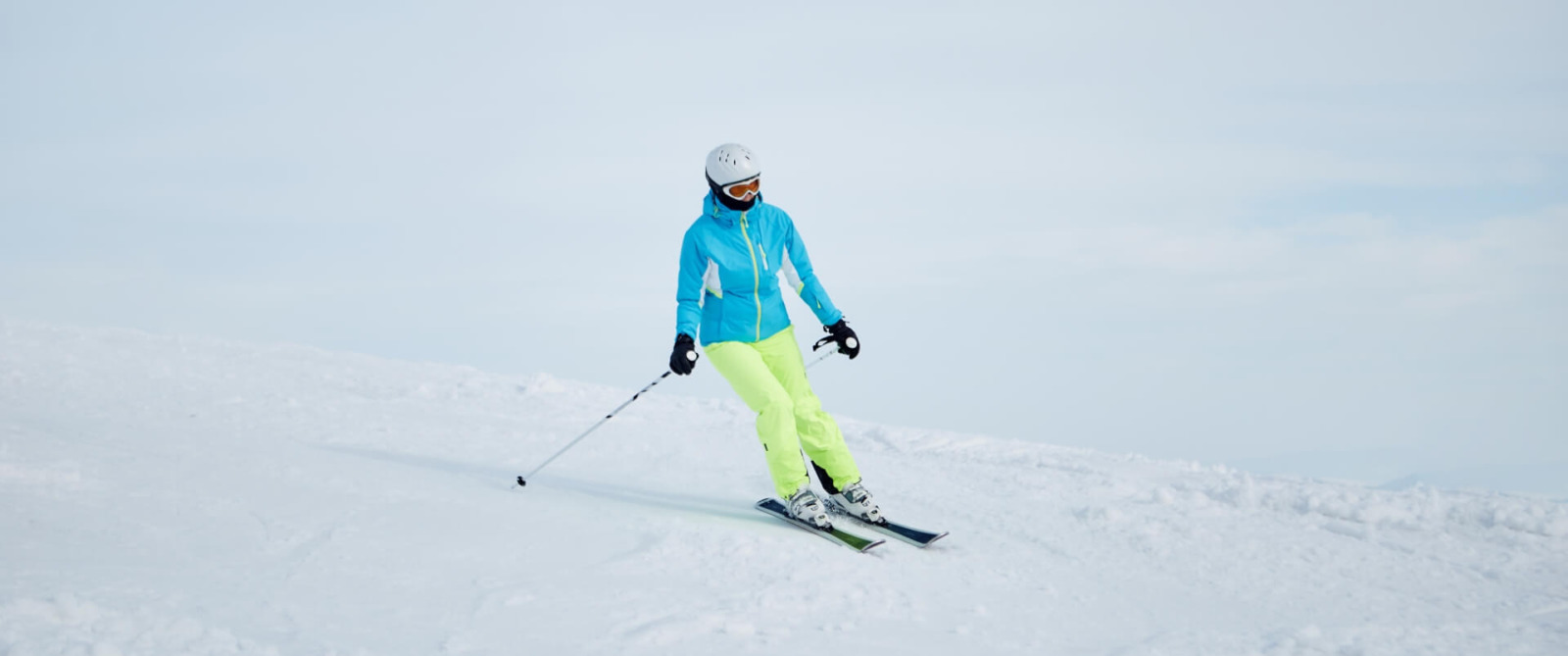
Did you know that Karuizawa is the only town in the world to have hosted events at both Summer and Winter Olympic Games? Having hosted equestrian events during 1964 Tokyo Games and curling during the 1998 Nagano Games, Karuizawa has a quiet but proud Olympic heritage, something that can be celebrated at its small ski resort Karuizawa Prince Hotel Snow Resort is a small resort well-suited to beginners wanting to enjoy the snow. The resort’s ten trails breakdown as 50% beginner, 30% intermediate and 20% expert but in reality, this resort is really a playground for newbies and families. If you’re an intermediate or advanced skier or boarder, this isn’t the resort for you and you’d be better-suited heading to one of Nagano’s other many great resorts including Shiga Kogen Ski Resort. It is also worth noting that Karuizawa Snow Resort doesn’t receive the deep powder or boast the reliable conditions of many other Nagano resorts, often relying on snow-making machinery to keep the runs open. But if you’re a beginner, family or just looking for a quick run on the slopes, the resort is open from November to March and only 5-minutes drive from Karuizawa Station.
10 / KIDS SNOW FUN AREA / November to March
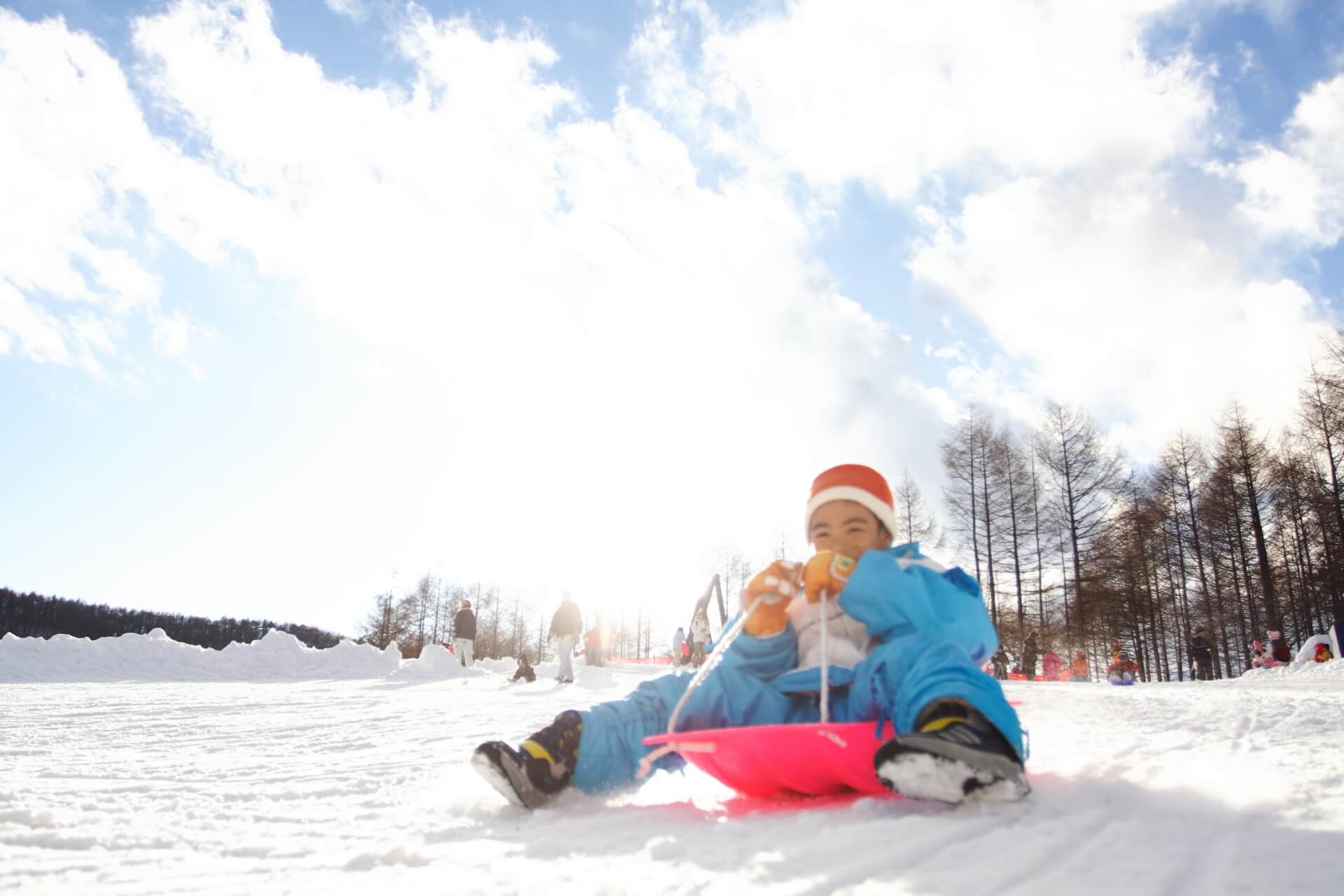
Operated by the Prince Hotel group, Karuizawa Snow Resort offers a ‘Snow Kids initiative’ to attract families. As well as offering free ski-lift access to kids under the age of thirteen, the resort also offers a variety of games and events geared towards younger skiers throughout the year. If you’re lucky, you might even get to meet Tonakky, Karuizawa Ski Resort’s ample-antlered mascot! For an additional fee, the resort also offers specialized children’s ski lessons. Advance booking is recommended.
11 / CYCLING AROUND KARUIZAWA / best: May to November
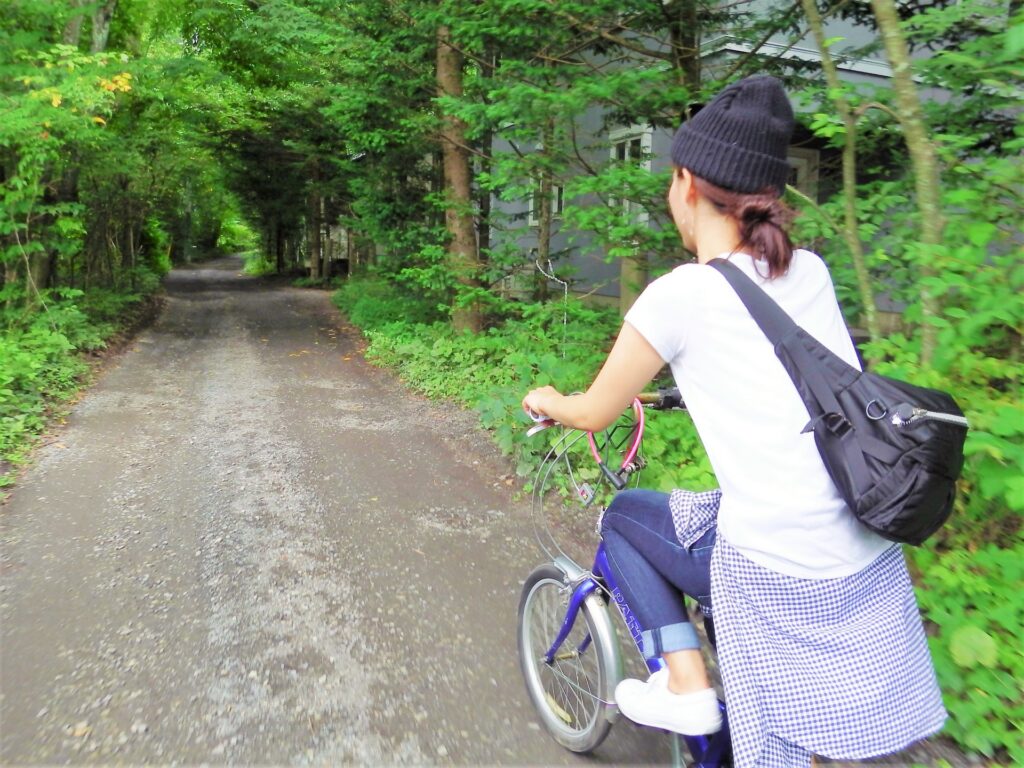
If Karuizawa has any great attributes to recommend to city-dwellers, it is the remarkably clean air, and the freshness that comes with being immersed in nature. With this in mind, perhaps one of the best ways to get around town is to get on your bike, literally! Karuizawa, with its setting at the base of Mount Asama, offers some brilliant cycling routes. Around Karuizawa Station you will find a number of bicycle rental shops, with very fairly priced hourly and daily rates. Karuizawa’s slightly more elevated position in relation to the surrounding area also means it is noticeably cooler, even in the heat of summer, with the gentle breeze being a very pleasant counter to all the heat and humidity.
12 / GOLF IN KARUIZAWA / May to November
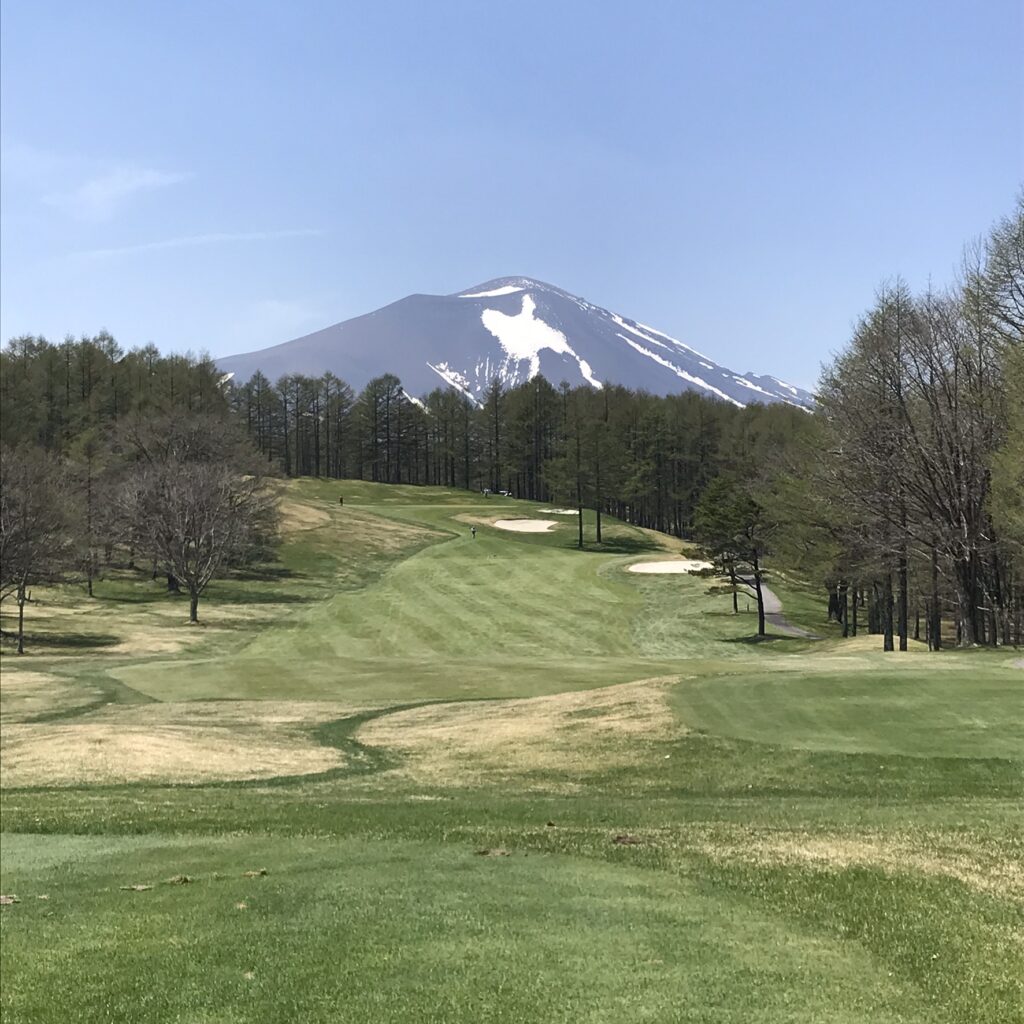
The lush surrounds and cool climate of Karuizawa make it ideal for golf, and as such, the area boasts more than a dozen courses. The undisputed jewel in the crown here is Karuizawa Golf Club, which has even hosted national championship events in the past. However, it is an exclusive membership, and with less than 10,000 rounds played at the course each year, you could face a bit of trouble getting in! Thankfully there are also a number of equally enjoyable public golf courses dotted around the area. Perhaps the best of these can be found at the Karuizawa 72 Golf Resort, which offers six different courses of varying difficulty. Whether you’re a seasoned pro or a mini-golf veteran looking to step up, Karuizawa has a course for you.
13 / HIROSHI SENJU MUSEUM / all year round
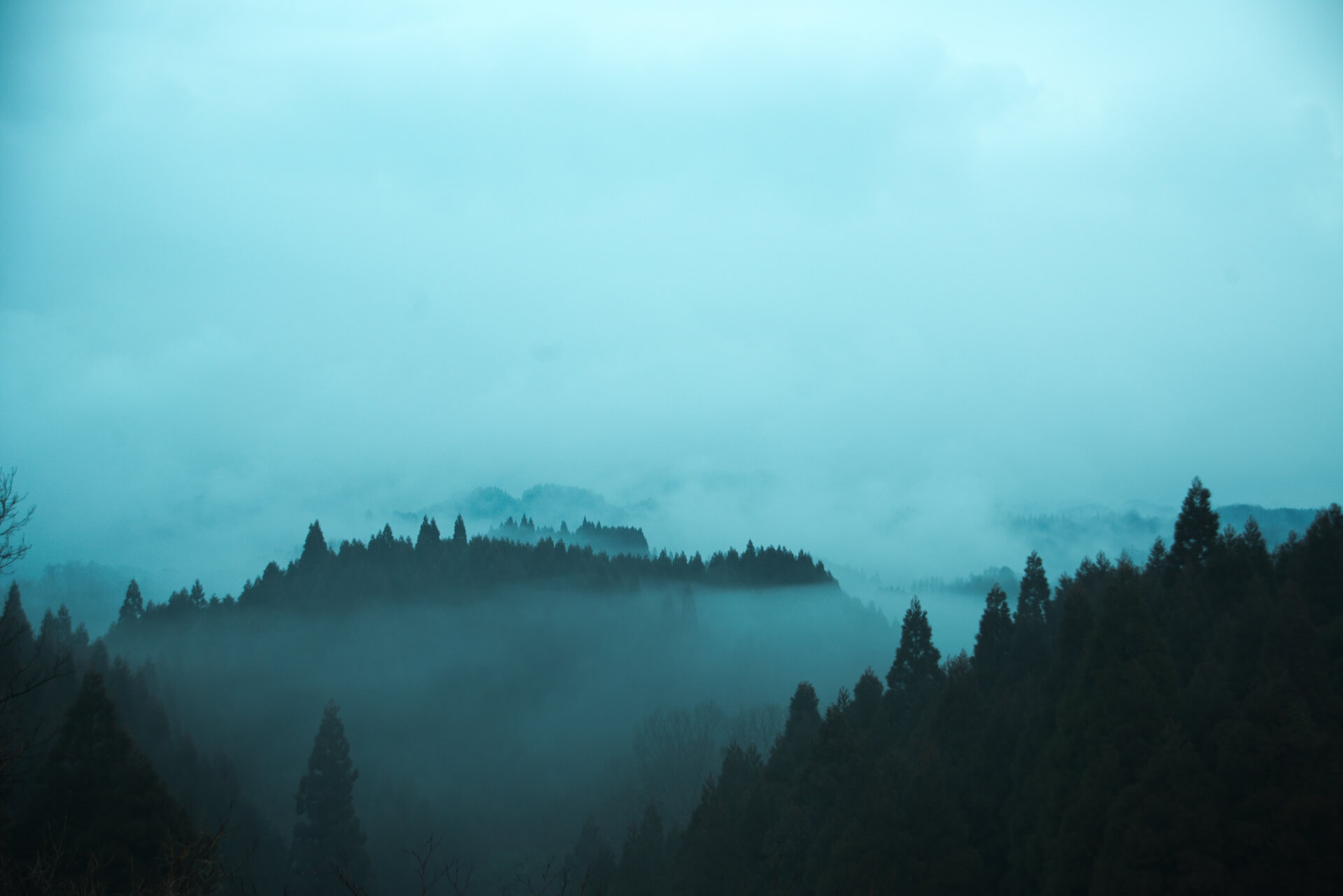
One of multiple galleries and museums in Karuizawa, the Hirosthi Senju Museum profiles the work of the eponymous artist, known for his paintings of cascading waterfalls and misted-laden cliffs. A popular artist in the Japanese corporate world and from a prominent Tokyo family, Senju’s art captivates some viewers while the repetitive nature of his work leaves some viewers uninspired. Set within a beautiful building designed by architect Nishizawa Ryue, exhibition spaces are bright yet tranquil, with a strong sense of contemplation and flow between galleries.
14 / ONIOSHIDASHI VOLCANIC PARK / all year round
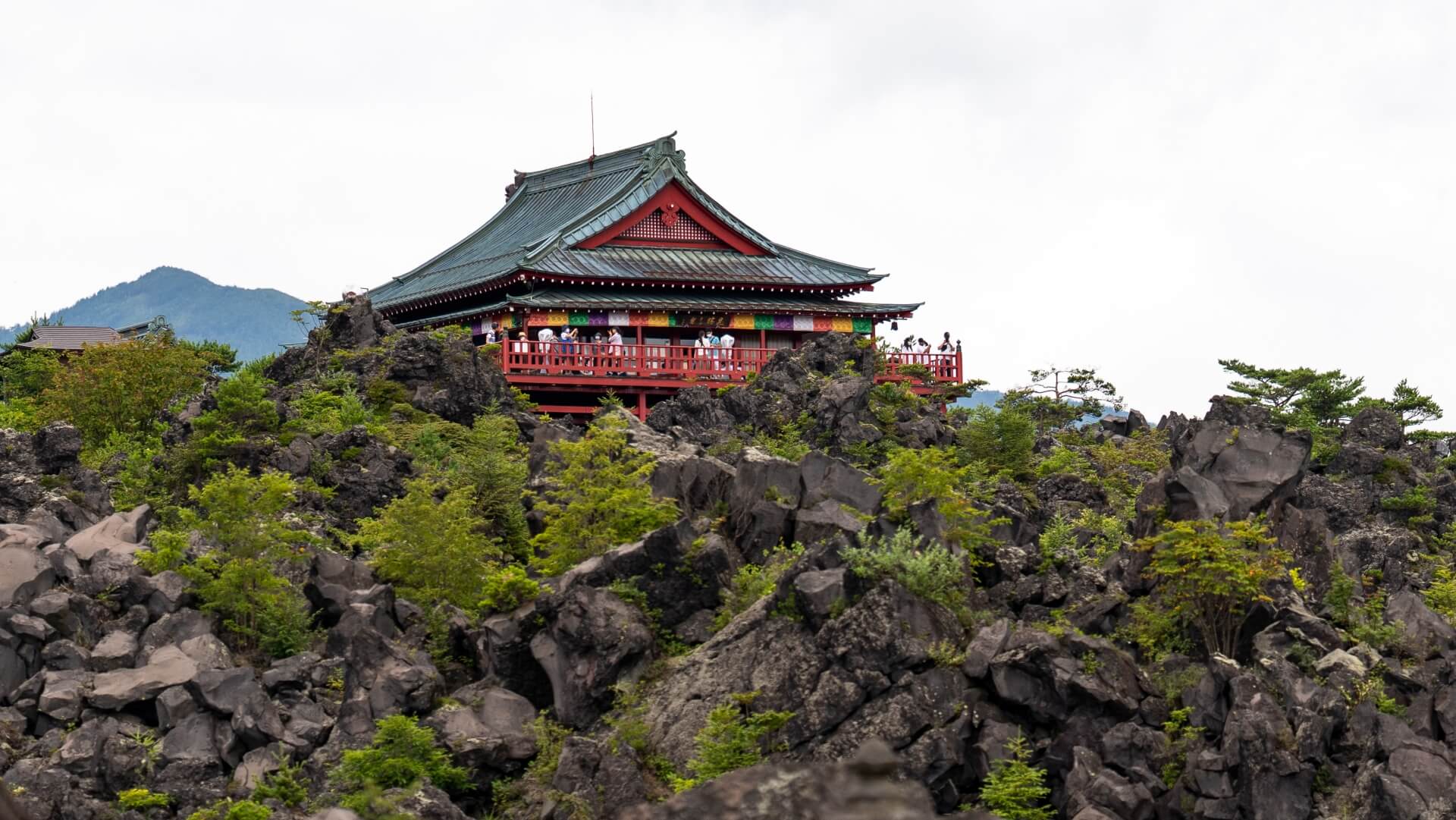
Have you ever wondered what the aftermath of a volcanic eruption looks like? Well, the answer is something like Onioshidashi Volcanic Park. In 1783, the nearby Mount Asama erupted violently. Covering the entire area in a thick layer of lava, ash and molten rock. In time, as these elements cooled, they formed the rough, jagged terrain that characterizes Onioshidashi Park today. Volcanic rocks formed from the sediment of the 1783 Asama eruption give the park an appearance that looks less like a conventional Japanese nature reserve and more like the kind of rocky landscape one would expect to see on a “Star Trek” away mission to some strange, new world. From this elevated viewpoint, visitors can also enjoy panoramic views of the surrounding towns and villages.
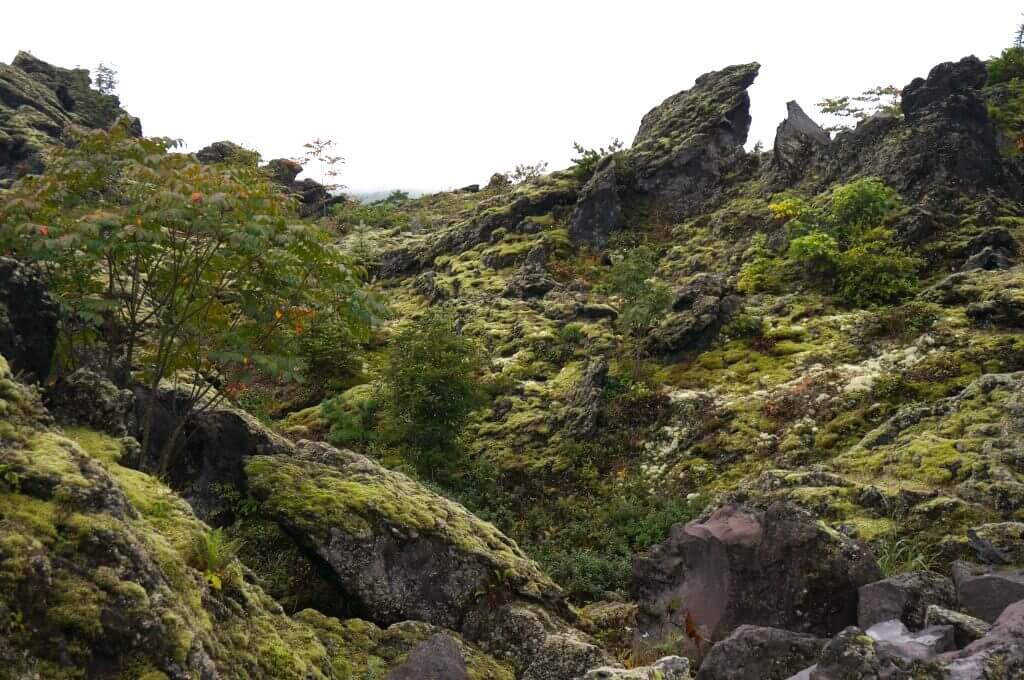
In the center of the park, you will also find a shrine to the goddess Kannon, said to bestow mercy on those in her care. The shrine was built in the hope that it will protect the locals from any further eruptions from Mount Asama. Two hundred years on, and, fingers crossed, it seems to have done the trick so far! Mt. Asama is an active volcano and your personal safety should be your first priority. The Japan Meteorological Agency provides real-time advice and warnings for the entire country. Prior to visiting Asama/Onioshidashi Park, we recommend checking the following website.
1 Day Tour
| 1-Day Tour from Nagano and Karuizawa: Unwind in Kusatsu Onsen | |
|
| |
| Period | April – November |
| Time | 09:30 – 17:30 |
| Meeting Place | Nagano Station Karuizawa Station |
| Adult Rate | ¥24,800 |
| Child Rate | ¥15,500 |

Our tour of Kusatsu from Karuizawa includes a stop in at the Onioshidashi along the way. If you want to see the magnificent landscapes on display here before having time to relax at Kusatsu, this tour is for you.
15 / OIWAKE-JUKU / best: May to November
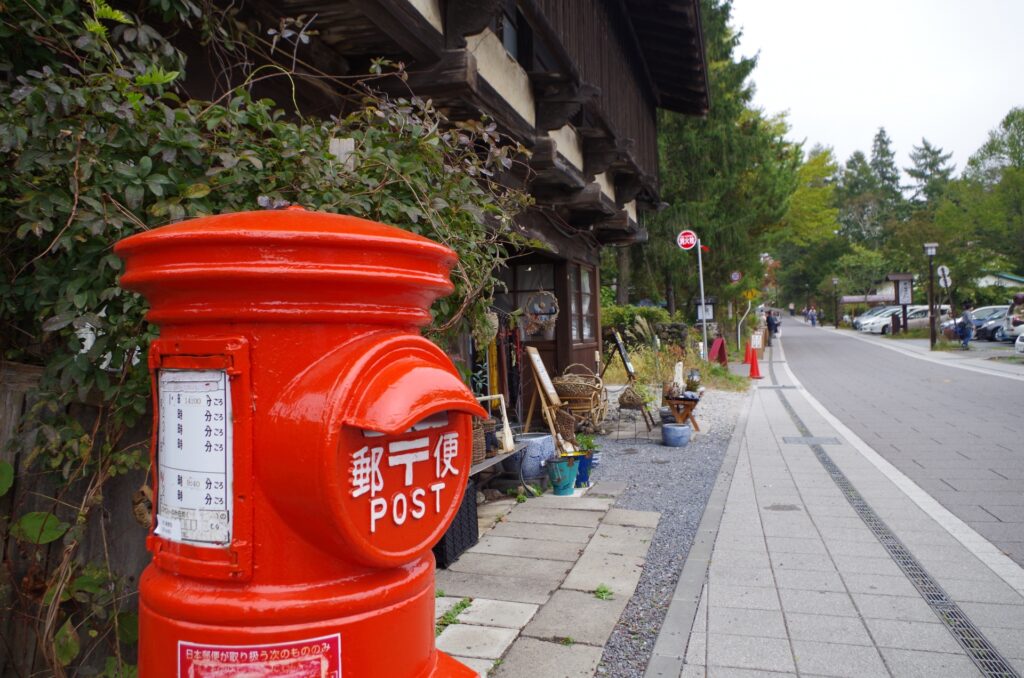
During the Edo Period, Japan also had these trading routes that crossed the entirety of the country. Oiwake-juku, in Karuizawa, is what was known at the time as a ‘post town’, a place where these trade routes met and diverged. As such, many traders, travellers, military officers or government officials of the time would stop over at Oiwake-juku before continuing on to either Zenko-ji Temple to the north, or the Sea of Japan coastline to the west. Oiwake-juku, in Karuizawa, is what was known at the time as a ‘post town’, a place where these trade routes met and diverged. As such, many traders, travellers, military officers or government officials of the time would stop over at Oiwake-juku before continuing on to either Zenko-ji Temple to the north, or the Sea of Japan coastline to the west. The remnants of the road remain today and offer a pleasant stroll back in time with a couple of nice cafes, bakeries and restaurants nearby.
16 / WALK THE USUI TOGE TRAIL / best: May to November
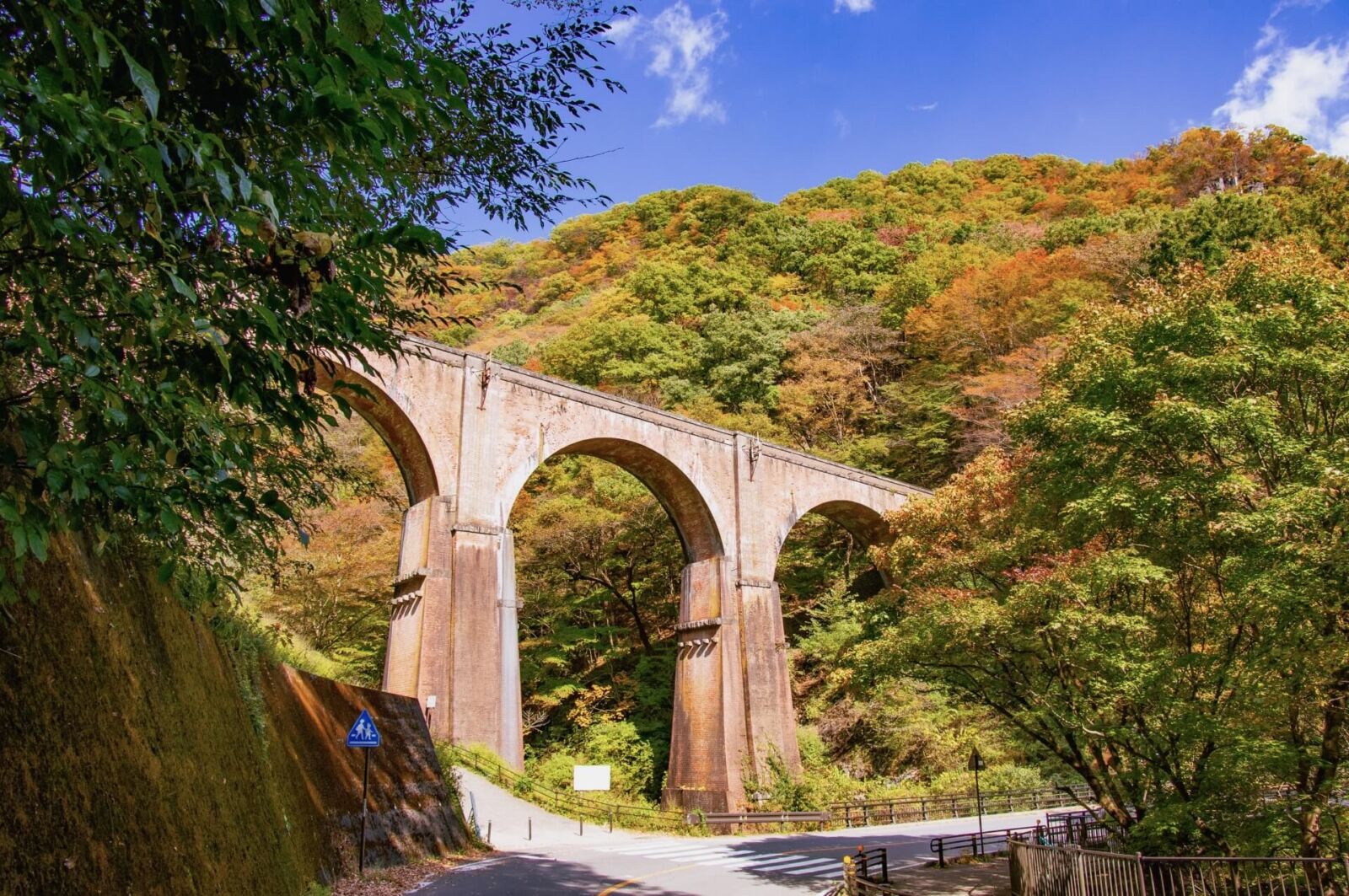
There are many great hiking trails throughout the Shinshu region of Japan. However, there aren’t many that span two prefectures. Traversing Gunma and Nagano Prefectures, The Usui Toge Trail is such a route. In the days before Shinkansen trains or highway buses, The Usui Toge Trail formed part of the main trade route connecting Nagano and Gunma with Tokyo and Yokohama to the south east.
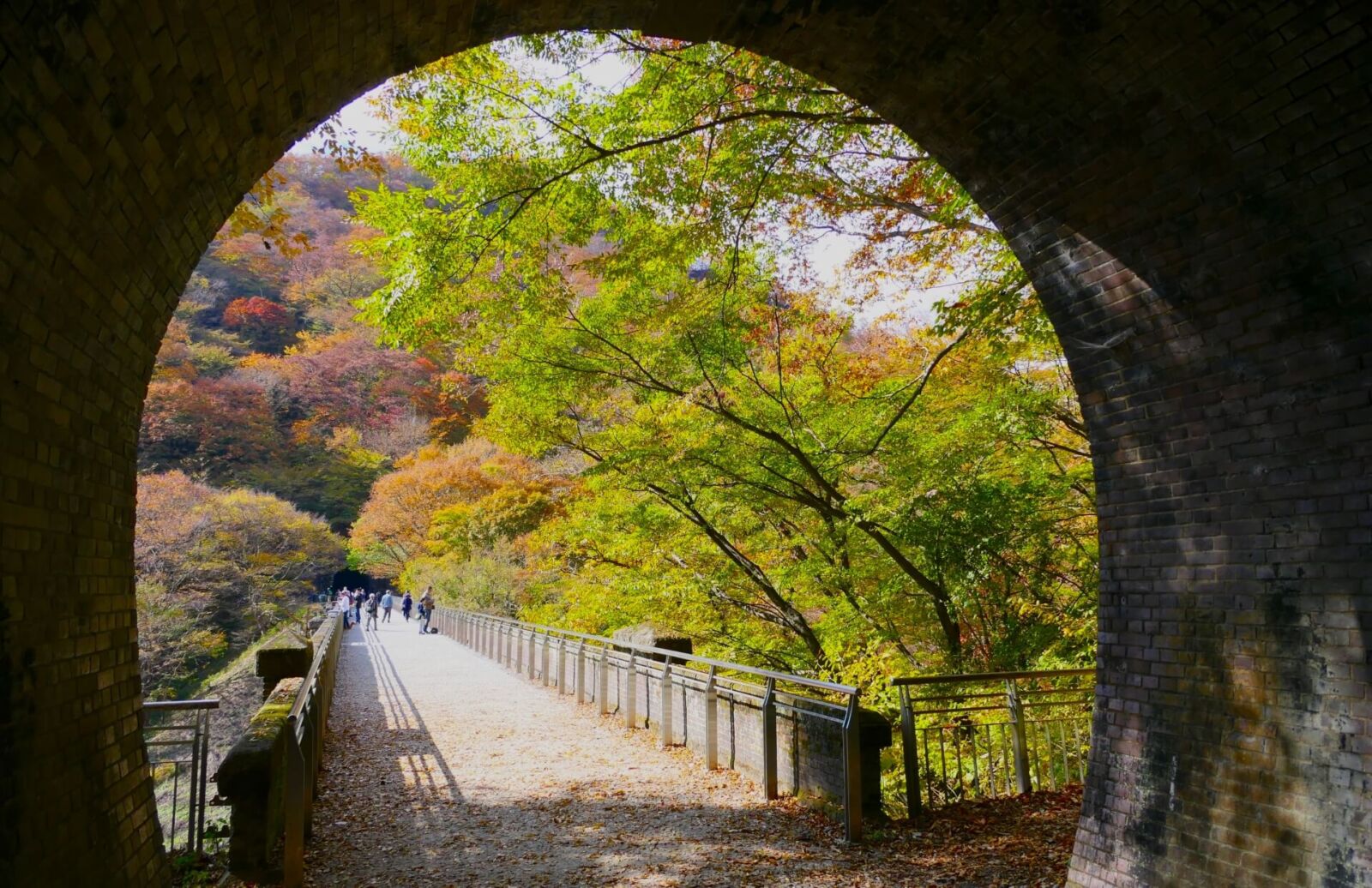
In time, as Japan modernized towards the end of the 19th century, The Usui railway line was built, connecting Yokokawa in Gunma with Karuizawa in Nagano. The line was closed almost a quarter of a century ago, but the trail endures, and indeed with trains no longer an issue, it is a hiking trail that continues to grow in popularity day by day. Along the trail, why not stop off at the Usui Line Railway Heritage Museum to look back on the history of the line and perhaps even have a go at driving an electric train yourself.
17 / KUSATSU ONSEN / all year round
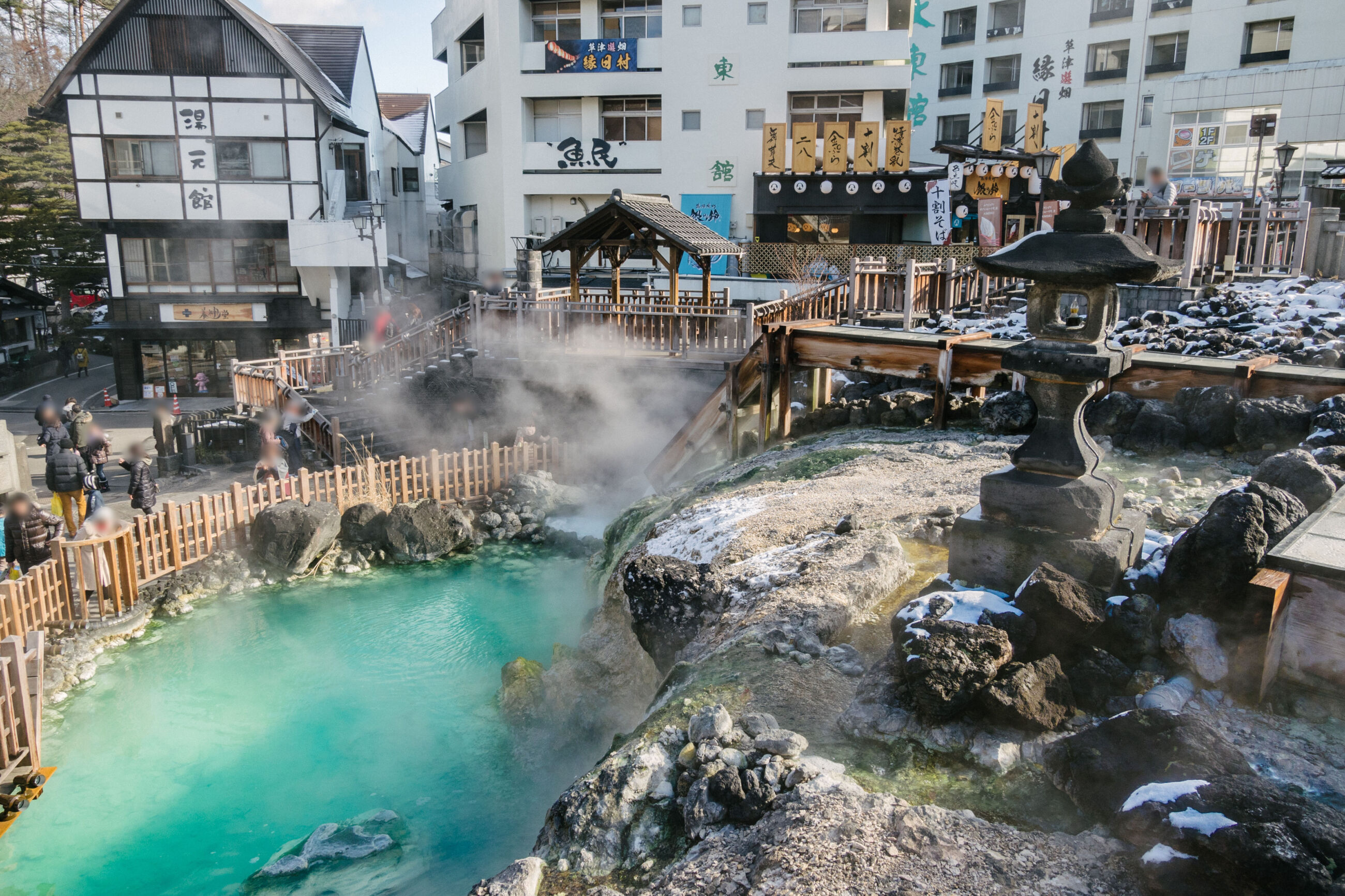
Around 45KM / 60-minutes drive from Karuizawa Station, Kusatsu Onsen is one of Japan’s most famous hot spring towns. Located just over the border into Gunma Prefecture, Kusatsu Onsen is centred around its iconic ‘yubatake’. Translating as ‘hot water field’, the yubatake is large open-air area over which thermal water runs along timber troughs. In doing so, the incredibly hot volcanic water cools to a temperature that allows it to be used in the town’s many bathhouses.
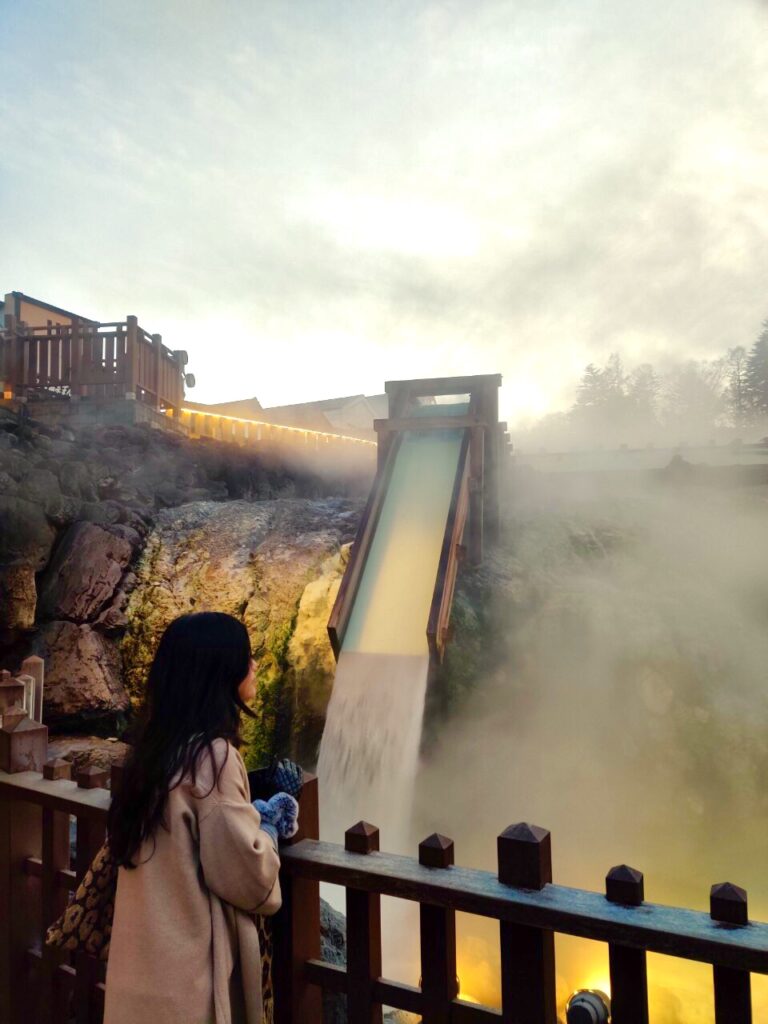
The eagle-eyed among you will notice that each of the baths has a slightly different water. Some are cloudy, others are clear. This is due largely to the biodiversity found on Mount Kusatsu-Shirane, from where the waters in these baths are derived. Each bath has its own unique blend of minerals and are said to help with a wide range of ailments. According to local legends, the only thing these magical baths can’t cure is a broken heart!
1 Day Tour
| 1-Day Tour from Nagano and Karuizawa: Unwind in Kusatsu Onsen | |
|
| |
| Period | April – November |
| Time | 09:30 – 17:30 |
| Meeting Place | Nagano Station Karuizawa Station |
| Adult Rate | ¥24,800 |
| Child Rate | ¥15,500 |

If you wish to visit Kusatsu from Karuizawa, one of the best ways to do so is on our group tour! Departing from Nagano Station and Karuizawa Station, and including a stop at the majestic dry lava fields of the Onioshidashien along the way, this tour makes transport easy and takes away the stress of worrying about timetables to leave you more time to enjoy this great town.
18 / Shiga Kusatsu Kogen Route / June to November
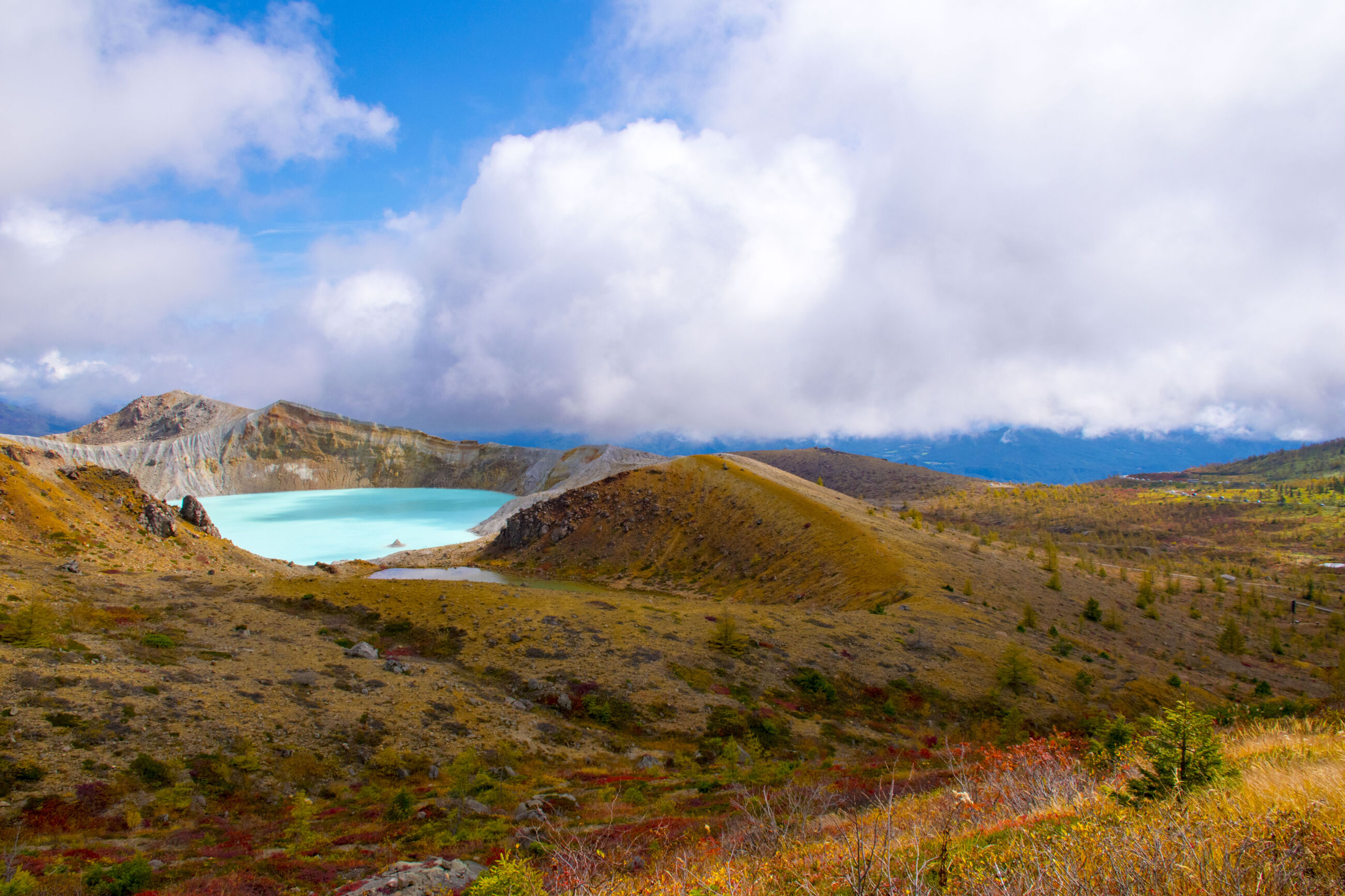
Open from May to mid/late-November, the Japanese National Route 292, otherwise known as the Shiga Kusatsu Kogen Route is a scenic alpine driving route that winds through the Joshinetsu Kogen National Park. Running from Kusatsu Onsen toward the Jigokudani Monkey Park an up through Shiga Kogen Ski Resort, the route offers visitors stunning views of scenic vistas including Mt Shirane, Mt Yokote and other scenic areas deep into the national park, as well as convenient access between these two amazing locations in Central Japan from the comfort of your own vehicle or from private transport!
19 / JOSHINETSU KOGEN NATIONAL PARK / best: June to November

Mount Shirane lies within Joshinetsu Kogen National Park – the fourth largest national park in Japan. An area that also includes Mount Asama, the park boasts multiple ski areas within its boundary, fantastic hiking trails, a wealth of alpine flora and fauna, and on its western border, the Jigokudani Monkey Park. As the southern gateway to the park, Karuizawa is an ideal launching point from where to explore its beautiful landscapes, something most easily done by renting your own car once you arrive at Karuizawa. While the park can be enjoyed all year round, mid-November to April sees heavy snow blanket the area as the ski resorts enjoy Nagano’s longest seasons. If you want to hike or explore by car, best to do so from June to early November when the snow will mostly have melted.
20 / SHIGA KOGEN SKI RESORT / late-November to April
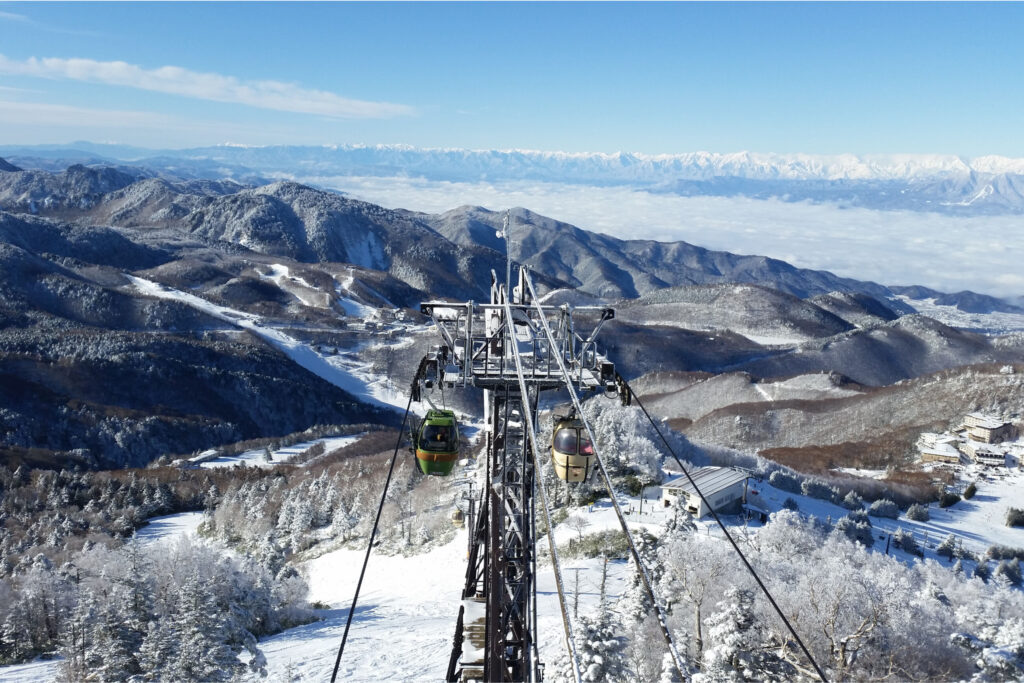
Nestled within the national park, Shiga Kogen is Japan’s largest and highest ski resort, boasting an unmatched expanse of interconnected terrain and Nagano’s longest ski season. Comprising 18 ski areas and between 90 to 100 courses (depending on how you count them) the entire resort is covered by an all-mountain pass and best enjoyed on a multi-day visit. Shiga’s ski fields lie between 1340 and 2307 metres and as such, are notably higher than any other resort in the region.
1 Day Tour
| 1-Day Tour: Snow Monkeys & Snow Fun In Shiga Kogen | |
|
| |
| Period | December to March |
| Time | 08:45 – 17:30/18:00 |
| Meeting Place | Nagano Station Snow Monkey Park Area |
| Adult Rate | ¥21,800 |
| Child Rate | ¥13,300 |

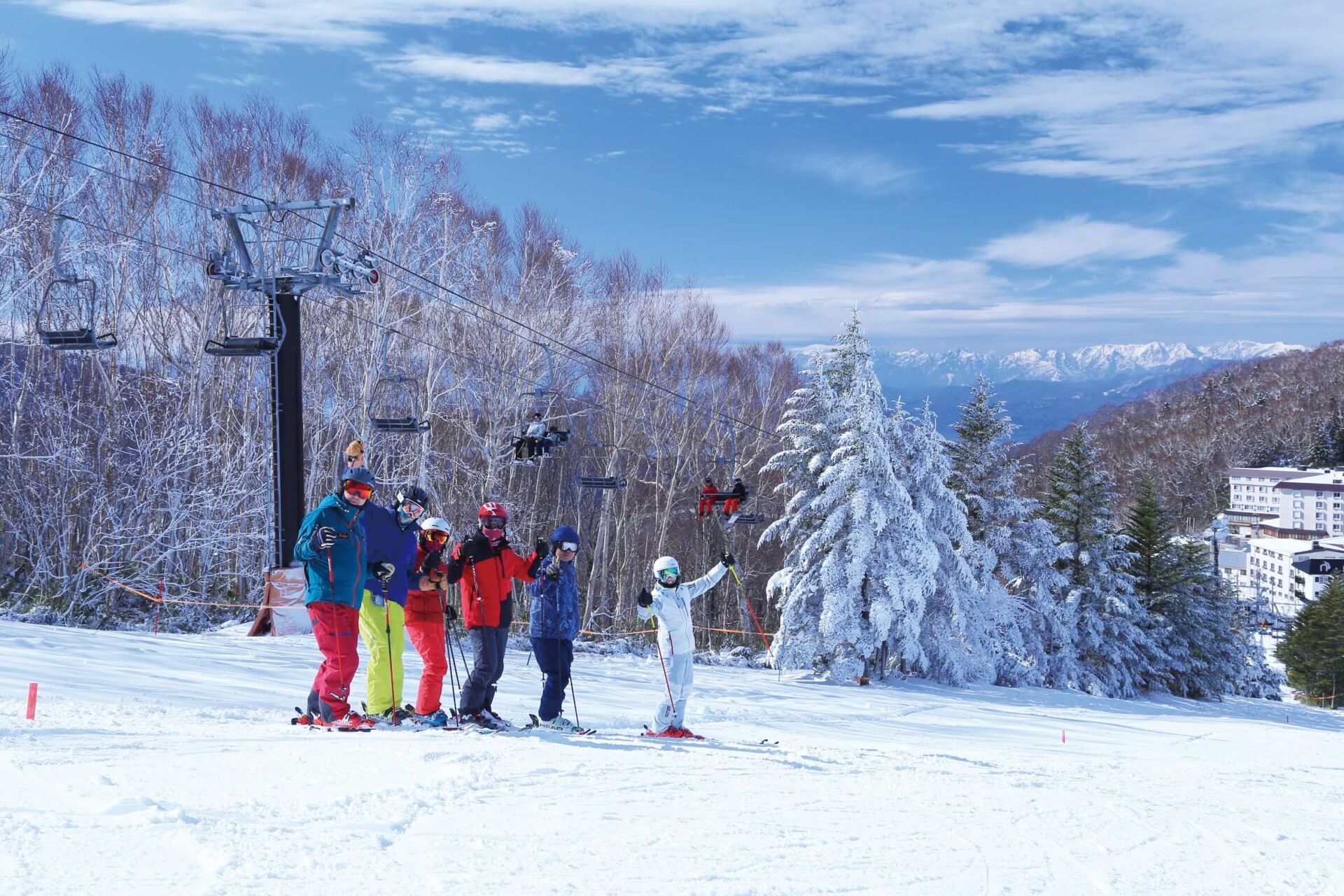
Having hosted events during the 1998 Winter Olympic Games, Shiga Kogen hasn’t seen much development in recent years. While some areas look a little tired and are in need of updating, the resort retains its Japanese and distinctly local character. But don’t count on that remaining the case. Winter 2020/21 will bring the opening of the new ‘Pulse’ Gondola at Shiga Kogen Yamanoeki (Mountain Station), a sign that things are changing and the resort is about to become a whole lot more popular as more and more people discover Shiga Kogen – Japan’s largest and highest ski resort.
21 / JIGOKUDANI MONKEY PARK / all year round
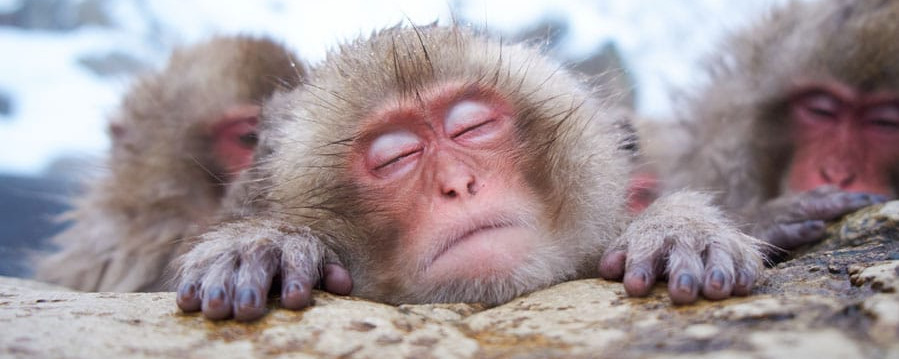
As the unofficial mascots of Nagano Prefecture, there are few things in nature more heart-warming than the site of the ever-adorable snow monkeys, soaking in their hot onsen baths to get a temporary respite from the cold winter chills. The Jigokudani Monkey Park offers the perfect opportunity for visitors to see these wonderful creatures up close and personal in their own habitat. Unlike many other nature reserves or safari parks, you can freely move amongst the monkeys and see how they go about their daily lives in this beautifully unspoiled landscape.
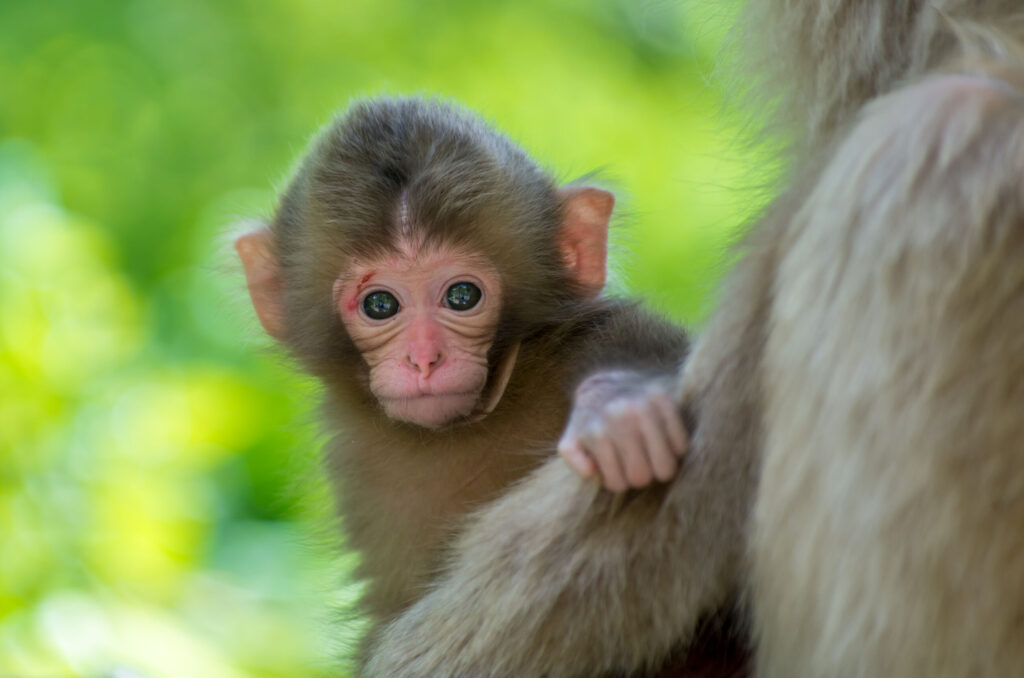
1 Day Tour

| 1-Day Tour: Snow Monkeys, Zenkoji Temple & Sake in Nagano | |
|
| |
| Period | All Year Round |
| Time | 09:35 – 17:35 |
| Meeting Place | Nagano Station Hakuba (winter only) |
| Adult Rate | ¥17,800 |
| Child Rate | ¥11,000 |

Want to visit the park on a guided tour? We offer both group and private tours all year round and can arrange a visit to the monkeys in combination with other great destinations, accommodation and restaurants. For more information, see ‘Tours and Charters from Karuizawa’ below.
22 / EXPLORE ZENKO-JI TEMPLE / all year round
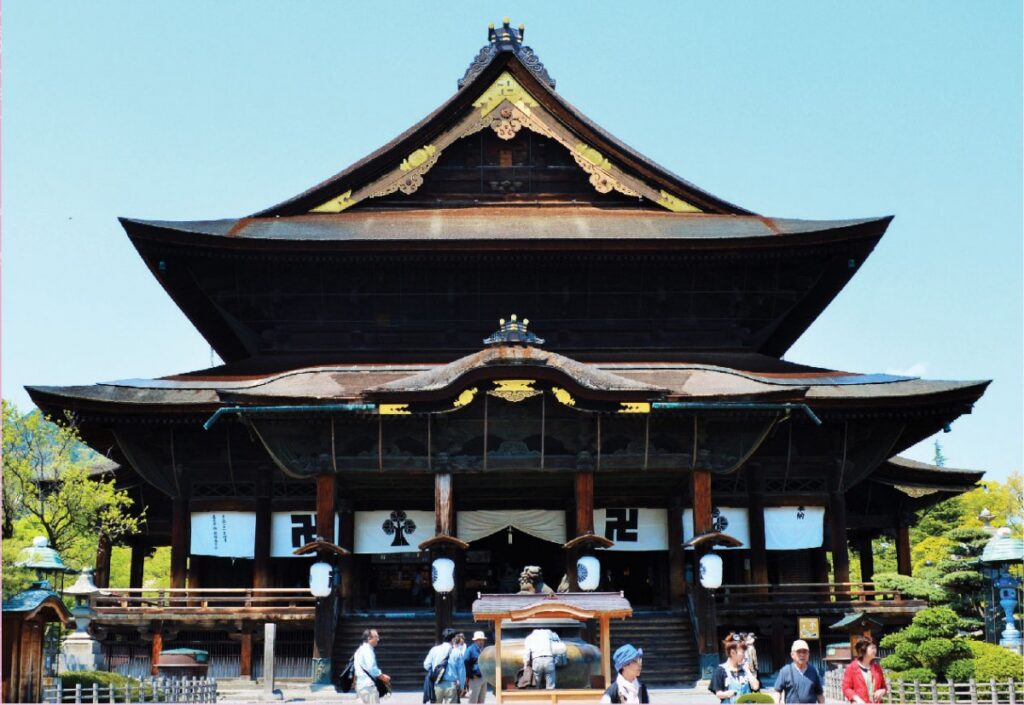
One of Nagano’s most famous landmarks, and indeed it was the root from which Nagano City itself sprouted from the Temple’s 7th century foundation onwards, Zenko-ji Temple is considered a national treasure of Japan. The Temple is dedicated to the Amida Buddha and also houses a statue of the legendary healer Binzuru. According to local beliefs, if you or someone you care about has an illness or ailment, you should say a prayer to the statue, located in the Zenko-ji Hon-Do (the main building at the rear of the temple complex). After offering prayers, you should touch the part of the body affected by the ailment on Binzuru’s statue. For example, if you’re suffering migraines, touch his head. In addition to Binzuru, there are a host of other beautiful and rare artefacts to view across the Temple complex, and a wide selection of events taking place throughout the year.
23 / MYOGI SHRINE / all year round
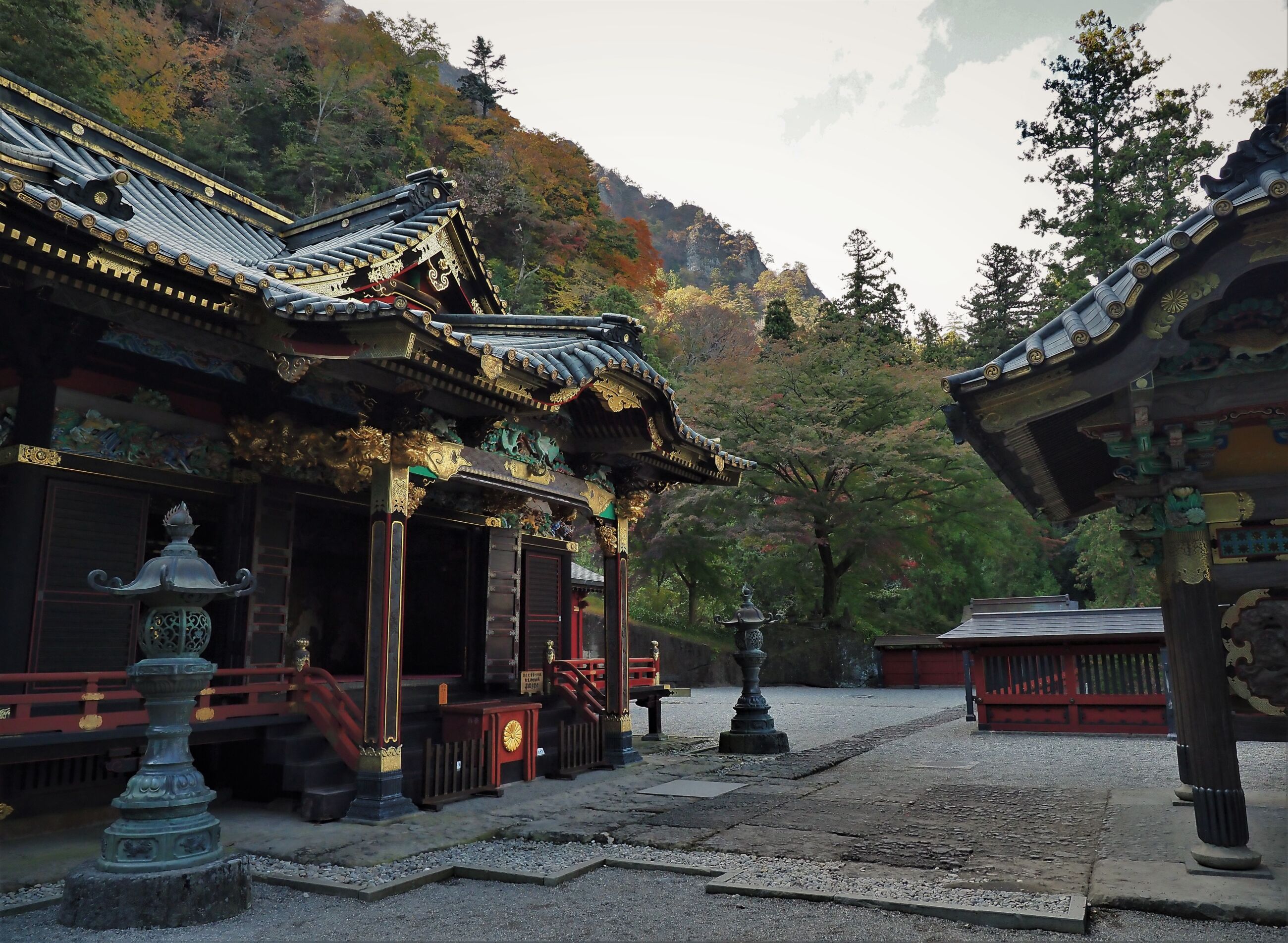
Many of Japan’s great shrines are enchanting not just as beautifully constructed monuments themselves, but also for the stunning landscapes that often form their backdrops. Myogi Shrine, located on the outskirts of Tomioka City is such a place. The Shrine is set against some absolutely stunning mountain and forest terrain. The Shrine is especially worth a visit in the autumn, from mid-October to late November when the leaves take on that beautiful blend of brown, red and golden colours. One of the Shrine’s most striking features is the rock gates, carved out of the mountain itself, which offer a rugged and unconventional welcome to the shrine itself.
24 / GUNMA SAFARI PARK / best: May to November
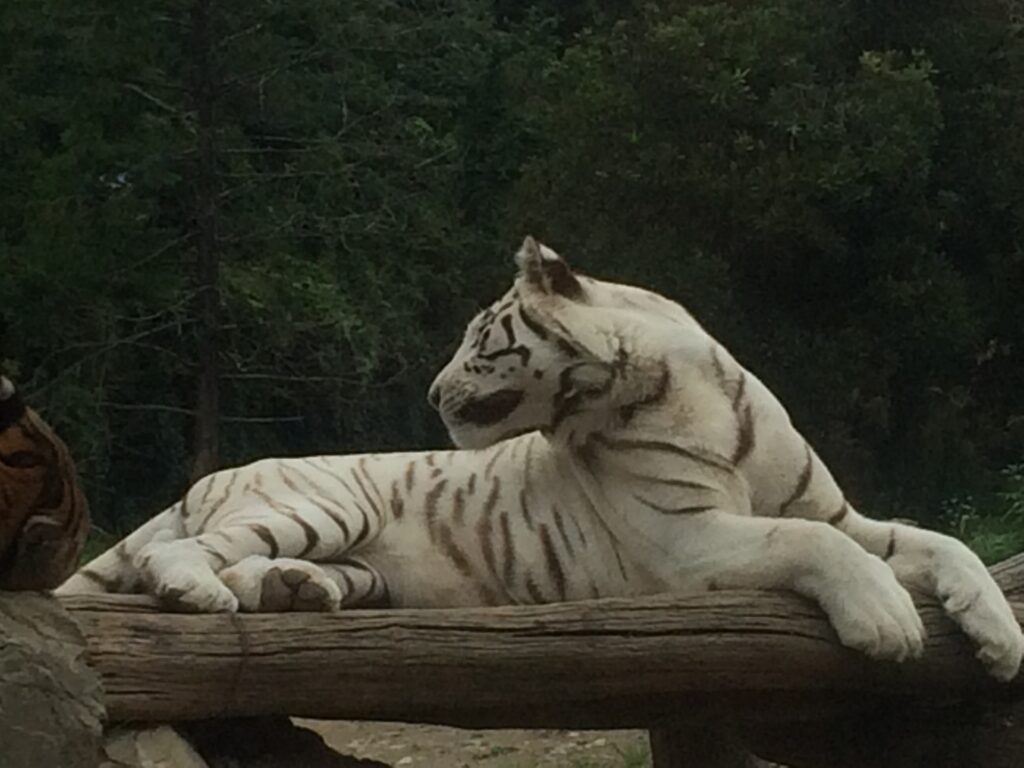
Also in Tomioka City, you will find Gunma Safari Park. The safari park offers visitors the chance to see over one hundred different species of animal. From small rodents to huge elephants. Familiar favourites such as tigers, giraffes and of course monkeys also feature prominently. Whilst you have the option of bringing your own car to tour the park, if you don’t want to risk the paintwork on your pride and joy the park also offers bus tours. Specialist off-road vehicles are also available on site that allow you to get a closer view of the park’s residents. There is also a small amusement park and ferris wheel on site for families to enjoy.
25 / CHERRY BLOSSOMS OF NAGANO / late-March to April
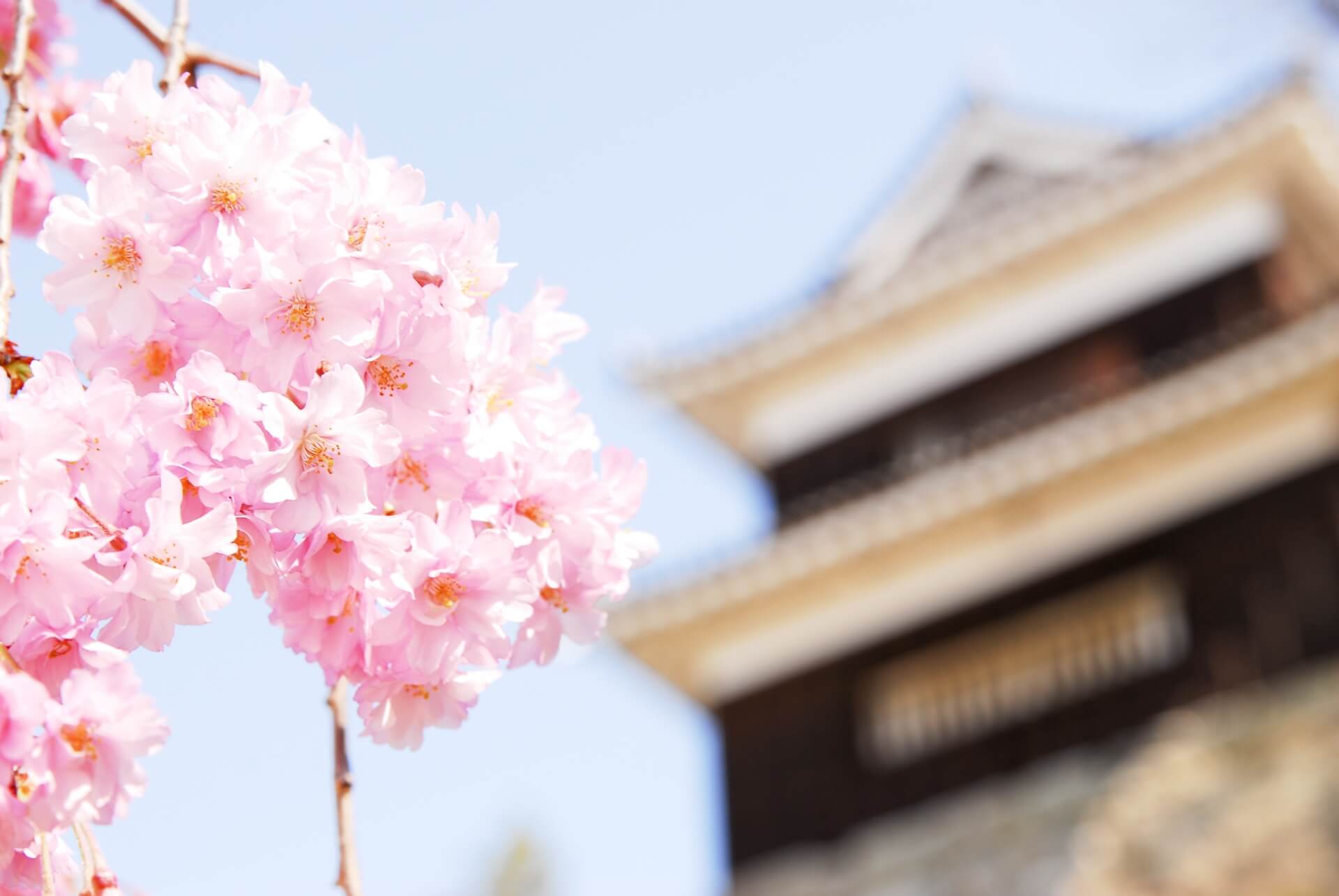
1 Day Tour
| [Spring Only] 1-Day Tour: Snow Monkeys & Cherry Blossoms in Nagano | |
|
| |
| Period | April |
| Time | 09:35 – 17:30/18:30 |
| Meeting Place | Hotel Kokusai 21 Nagano Station |
| Adult Rate | ¥17,800 |
| Child Rate | ¥11,000 |

Blooming each year in Nagano from late-March through April, cherry blossoms are a quintessential part of Japanese life and synonymous with spring. Known as ‘sakura’ in Japanese, the flowers are appreciated for their fleeting and fragile beauty that people gather in parks and other venues to enjoy together with drinks, food and lots of chat. Karuizawa has multiple areas where you can enjoy ‘hanami’ (flower-viewing) however the best nearby venue is without question Ueda Castle Park. Located in the heart of Ueda City – less than 20 minutes from Karuizawa when using the Hokuriku Shinkansen – Ueda Castle Park sits on the foundation walls and expansive inner grounds of the former castle; an area that is today populated by hundreds of cherry trees. The park hosts its own blossom festival with thousands of visitors flocking their each day while the flowers are in bloom, to wander and sit below the trees, and enjoy the company of friends and family well into the evening. Ueda Castle Park always draws big crowds, especially on evenings and weekends, so be sure to scout out a good spot early if you plan to go.
26 / VISIT UEDA INC. UEDA CASTLE PARK / all year round
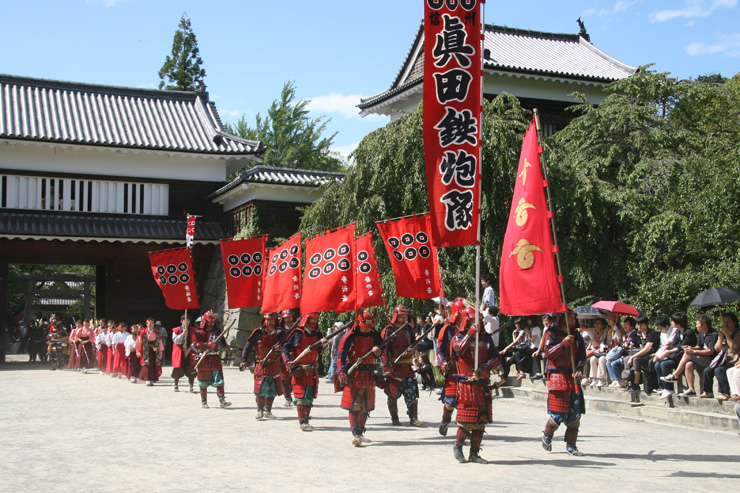
As the former stronghold of the legendary Sanada clan, Ueda is a place of true historic significance and any visit to Ueda begins at Ueda Castle Park – where visitors can walk in the shadow of the fearsome samurai that fought and repelled the equally legendary Tokugawa clan. To this day, Ueda Castle Park is in every sense the heart of the city and while the original castle no longer stands, the expansive park includes reconstructions of the East Gate and their defensive turrets.
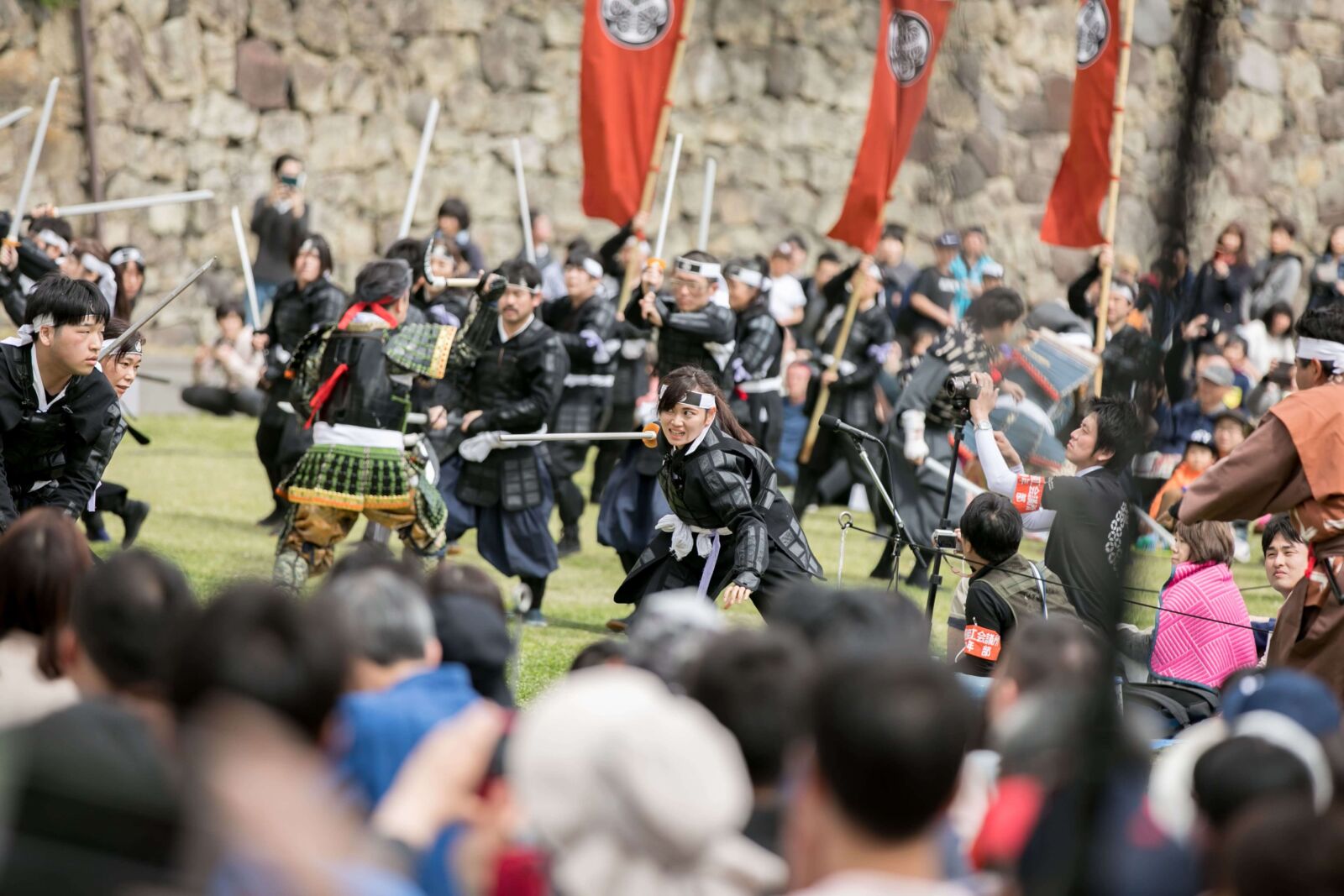
Visitors wanting to delve into the legend of the Sanada clan should make an effort to head to Ueda on the last Saturday of April for the ‘Ueda Sanada Festival’. A spectacular celebration of the lauded samurai, the festival runs through the day – from 09:30 to 16:00 – and features hundreds of participants dress in period costumes with displays of gunnery, sword-fighting and ‘taiko’ drumming drawing thousands of visitors to the castle park to watch a brilliant historical display. For more information about everything on offer, see our ’25 Things to Do Around Ueda / Bessho Onsen & Where to Stay’ page.
27 / ENJOY THE NOSTALGIA OF YANAGIMACHI / all year round
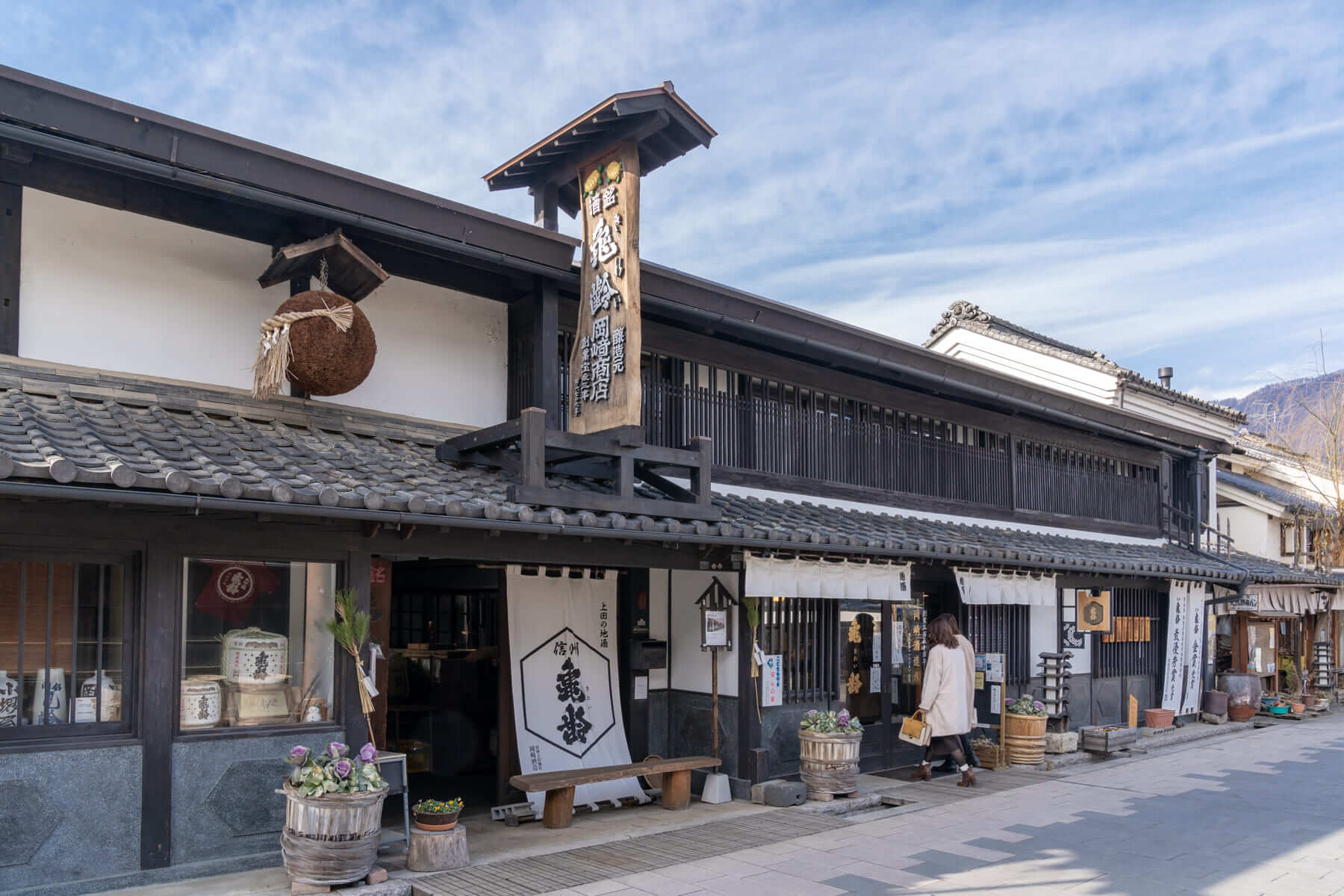
From the castle park, visitors can enjoy a leisurely 10 minute walk to the historic street of Hokkoku Kaido Yanagimachi or simply, ‘Yanagimachi’. Once part of the Hokkoku Kaido – an important trade route linking Ueda to Nagano and Niigata – Yanagimachi remains in a beautiful state of preservation thanks to the effort of local residents to retain the historic character of the street. Traditional merchant shops line the street, housing a range of stores and eateries including Okazaki Sake Brewery, Takeda Miso Brewery Hishiya, Bakery Levain and Co. Labo Shop along with soba restaurants, cafes and more. Much more than just a dining and shopping street, Yanagimachi is a great destination for keen photographers or anyone wanting a glimpse of the Japan that once was.
28 / ASHIKAGA FLOWER PARK / all year round
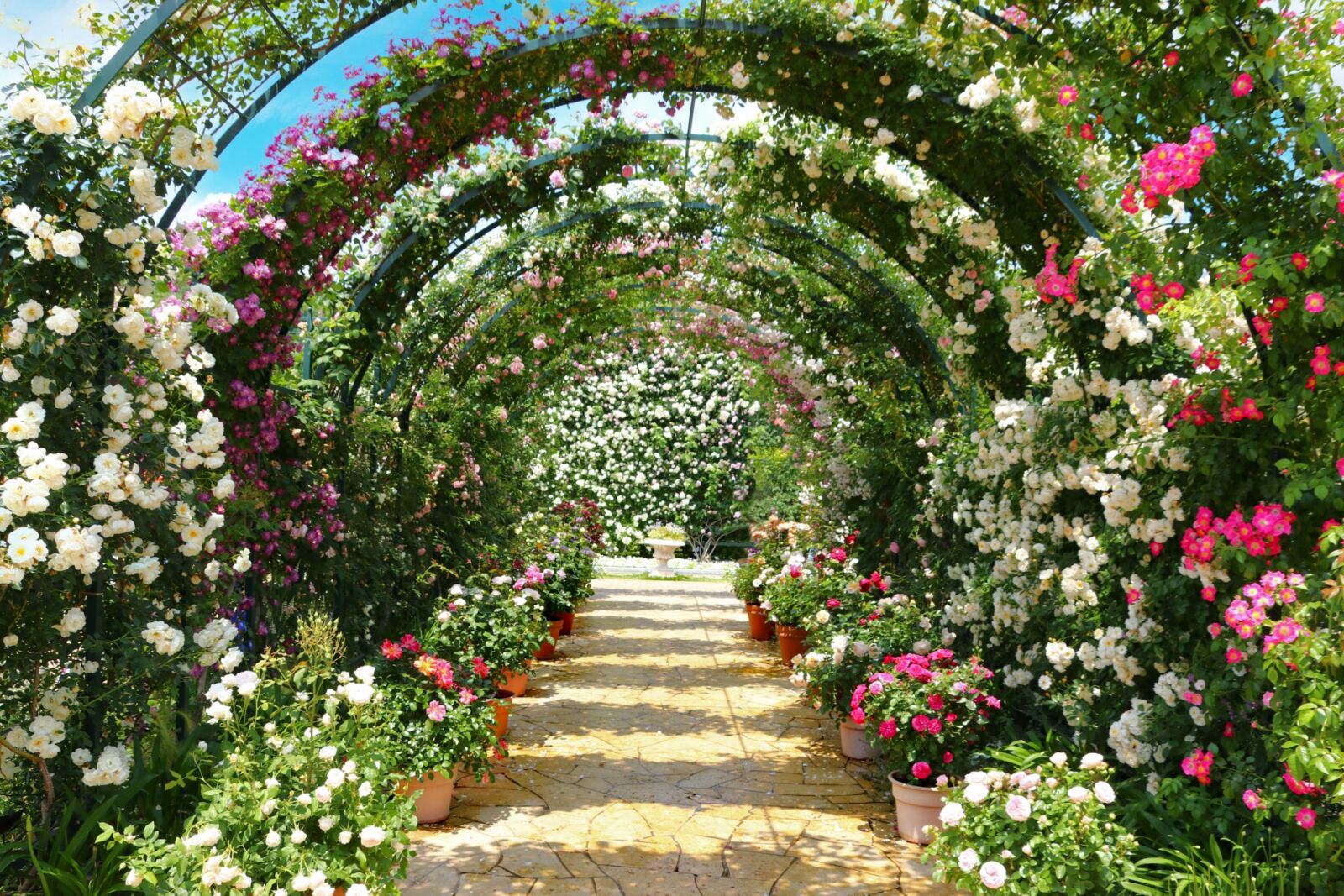
1 Day Tour
| 1-Day Tour from Nagano and Karuizawa: Colors of the Season at Ashikaga Flower Park | |
| Period | March – October |
| Time | 07:50 – 19:00 / 09:30 – 17:30 |
| Meeting Place | Nagano Station / Karuizawa Station |
| Adult Rate | ¥29,800 |
| Child Rate | ¥17,900 |

Located in Tochigi Prefecture, north of Tokyo, the Ashikaga Flower Park makes for a great day trip from the city or any of the nearby Onsen towns. Most famous for its wisteria, which are of massive size and draw huge crowds when in bloom, the park also has a number of other flowering plants, coordinated such that there is almost always something in bloom. And in mid-winter, when there are no flowers, the park is illuminated at night by a romantic and spectacular array of colorful electric lights.
The are can be accessed by car in only 1.5 hours from Karuizawa, or can be visited by participating in our group tour of the area.
29 / KAMIKOCHI ALPINE VALLEY / April to November
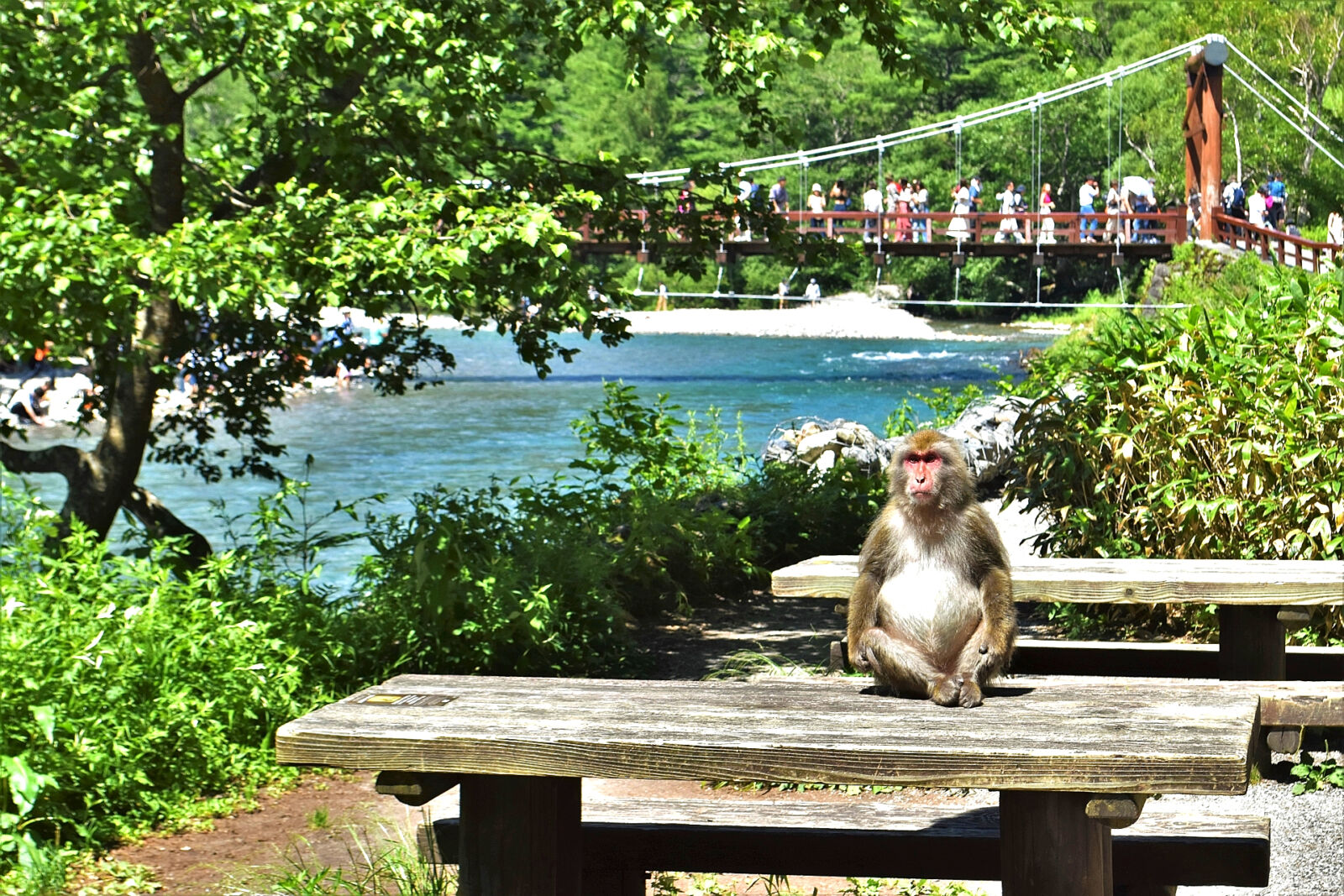
1 Day Tour
| 1-Day Tour from Nagano and Matsumoto: Kamikochi & Matsumoto Castle | |
|
| |
| Period | April to November |
| Time | 08:15 – 18:30 |
| Meeting Place | Nagano Station Matsumoto Station |
| Adult Rate | ¥23,800 |
| Child Rate | ¥11,900 |

One of Japan’s most spectacular areas of natural beauty, the Kamikochi area is a river valley in the shadow of the towering Hotaka Mountains. Clear water, fresh air, and birdsong await the visitor who makes it here for a hike. With a keen eye, you may catch sight of foxes, monkeys, badgers, various bird species, or even a bear! Accessible by Alpico Bus from Matsumoto or Shin Shimashima, it can be hard to reach from destinations such as Nagano City or Ueda City. However, those with a car will find it relatively straightforward, but it is important to note that you will need to park near the bottom of the park and reserve a bus to complete the last leg of the journey. Alternatively, you could participate in our tour, linked above, which will remove any need to worry about transport as our buses bring you straight from Nagano and Matsumoto into the heart of the valley.
30 / TATEYAMA-KUROBE ALPINE ROUTE / April to November
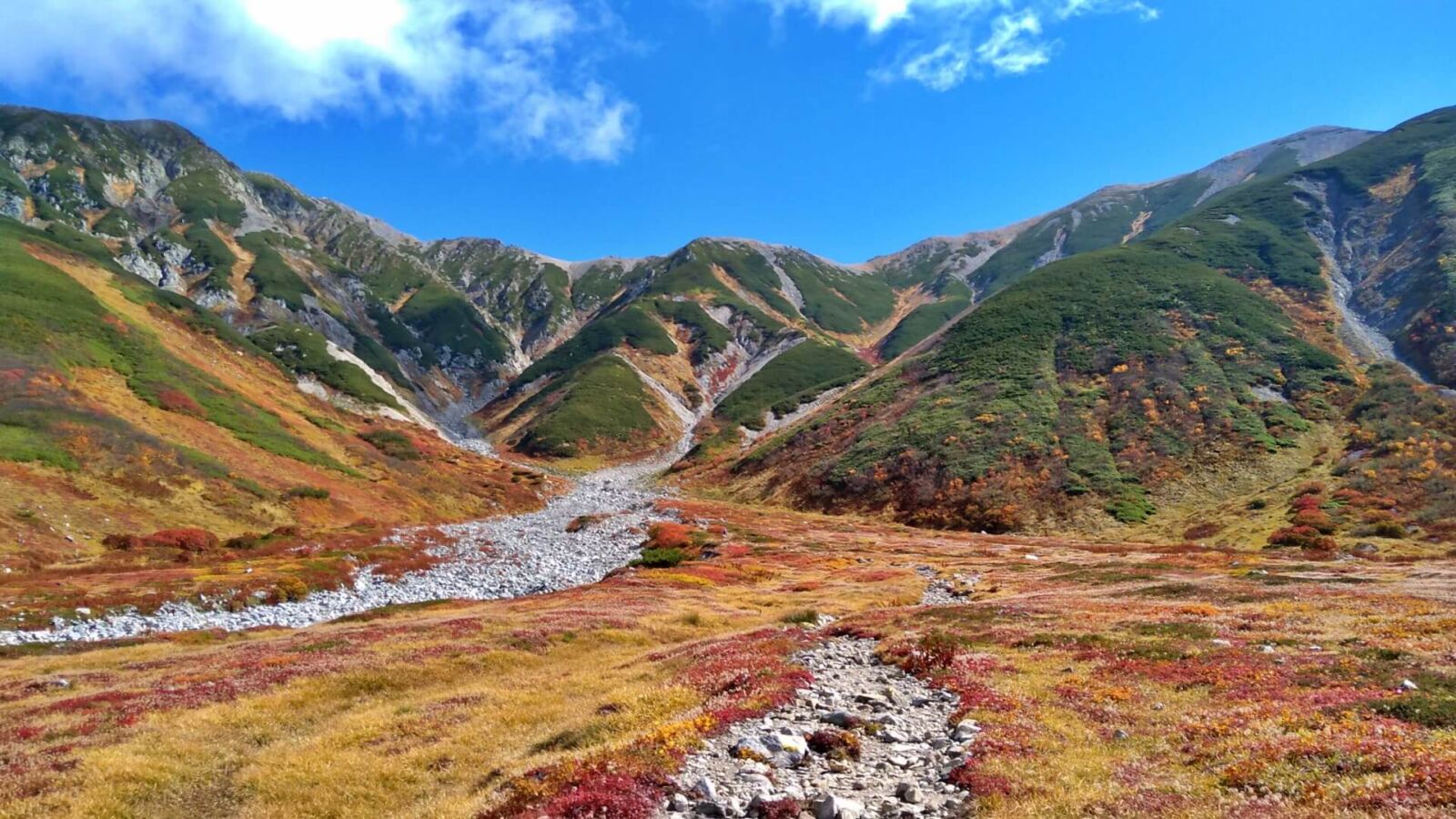
1 Day Tour
| [Spring Only] 1-Day Tour from Nagano: Snow Walls of Tateyama-Kurobe Alpine Route | |
|
| |
| Period | April to June |
| Time | 07:50/08:15 – 18:00-19:00 |
| Meeting Place | Hotel Kokusai 21 Nagano Station |
| Adult Rate | ¥30,000 |
| Child Rate | ¥23,800 |

The Tateyama-Kurobe Alpine route is a testament to human ingenuity, involving multiple forms of transport including ropeways, cable cars, and buses to reach the peak of Mt. Tateyama, one of Japan’s tallest mountains, without the need for a long hike. The Kurobe Dam along the way, one of the most spectacular dams in the world, is another technological marvel. The natural scenery here is just as stunning – the huge snowfall received each year near the peak turns into giant snow walls, towering over 15 meters tall in just one year and lasting until early July.
1 Day Tour
| [Summer/Autumn only] Tateyama-Kurobe Tour: Walking on the ‘Roof of Japan’ | |
|
| |
| Period | July to October |
| Time | 07:50/08:15 – 18:00-19:00 |
| Meeting Place | Hotel Kokusai 21 Nagano Station |
| Adult Rate | ¥30,000 |
| Child Rate | ¥23,800 |

The snow walls are not the only remarkable thing the area has to brag about however, as summer and autumn are famed for their alpine views and early fall colors. Always cooler than the lowlands, you can escape the city and hike above the tree line, and if you visit in late September through to mid October a variety of bushes and grasses will have turned bright red and orange for the season, as though the mountain was on fire.
BEST PLACES TO STAY WHEN VISITING KARUIZAWA
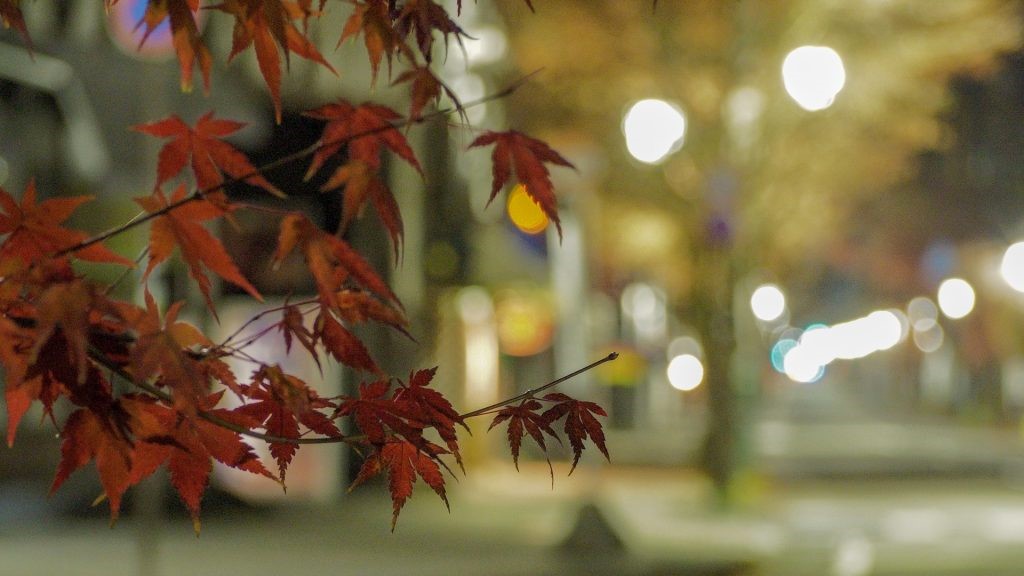
Karuizawa boasts an excellent range of accommodation options including many high-end hotels, guesthouses and self-contained apartments and lodges. Most visitors arrive at Karuizawa Station using the Hokuriku Shinkansen service, making the area around the station a convenient base. Alternatively, the Old Ginza / Kyukaruizawa district and area nearby Naka-Karuizawa Station also offer excellent accommodation options and attractions. For more information including accommodation listings, see our ‘Best Places to Stay in Karuizawa’ page.
HOW TO GET TO KARUIZAWA
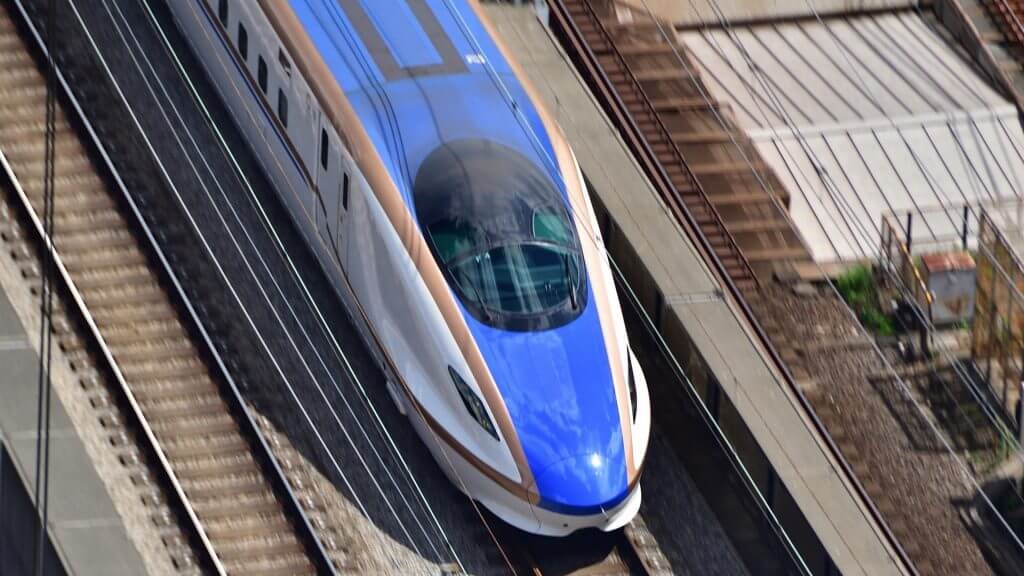
As a stop on the Hokuriku Shinkansen line running from Tokyo to Kanazawa, Karuizawa is easy to reach from the capital, nearby Nagano and beyond. Our ‘How To Get To Karuizawa’ page explains how to make the journey from those and many other popular starting points.
TOURS AND CHARTERS FROM KARUIZAWA
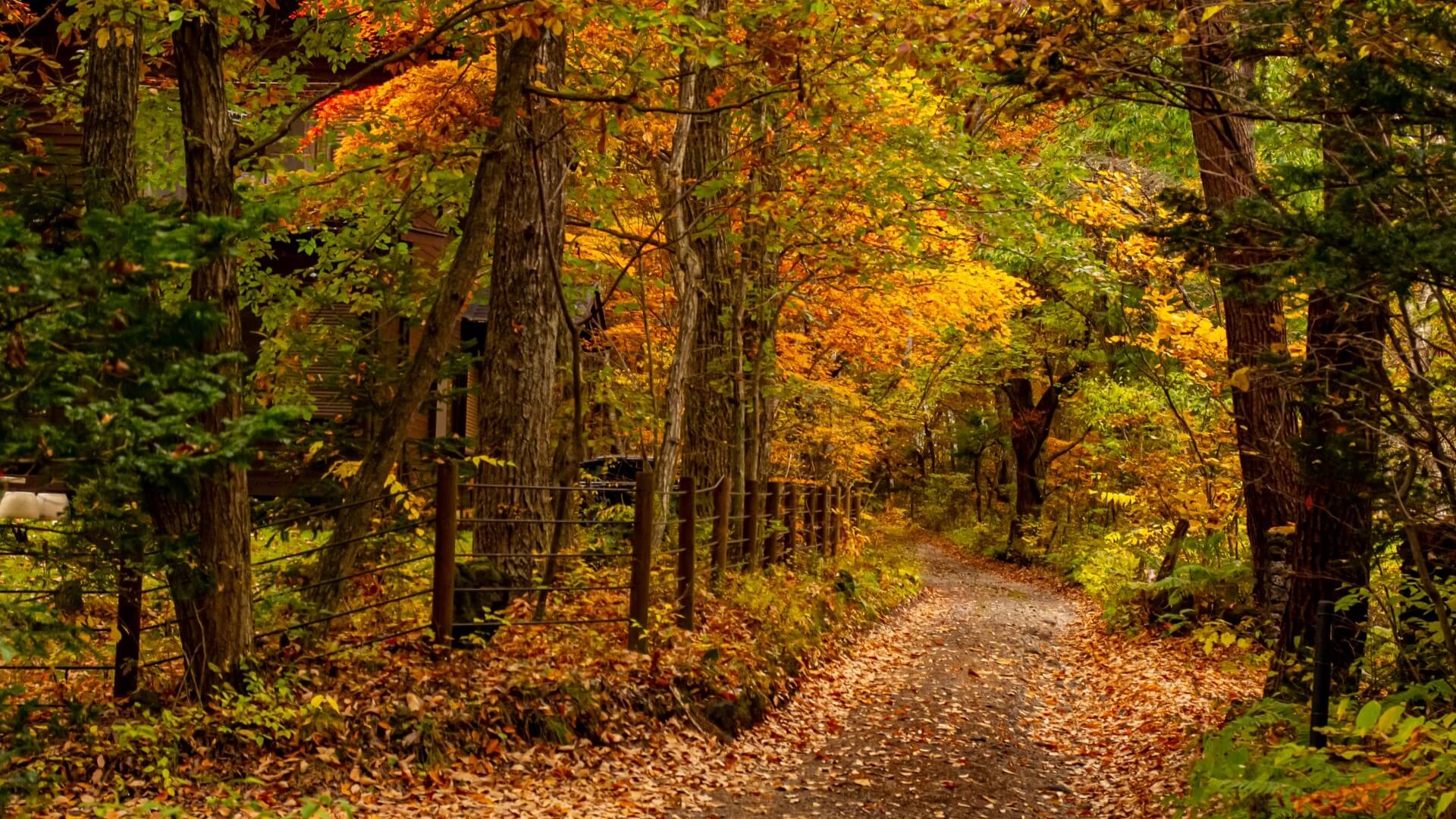
While Karuizawa is an amazing place to spend a vacation, you may wish to use some of your days there to travel a little farther afield! While Japan’s public transport is amazing, there are still times where it may fall short of fulfilling your needs. In those situations, we recommend taking a tour with us!
1 Day Tour
| 1-Day Tour from Nagano and Karuizawa: Unwind in Kusatsu Onsen | |
|
| |
| Period | April – November |
| Time | 09:30 – 17:30 |
| Meeting Place | Nagano Station Karuizawa Station |
| Adult Rate | ¥24,800 |
| Child Rate | ¥15,500 |

Offering pick up from both Nagano Station and Karuizawa Station, this group tour will bring you to Kusatsu with a stop at the beautiful dry lava fields of the Onioshidashien along the way. After some time to enjoy what Kusatsu has to offer, our tour vehicle will take you up into the mountains behind Kusatsu on one of Japan’s most scenic highways. This is not a tour to miss!
Private Tour
| [START FROM KARUIZAWA] Private Snow Monkey Tour | |
|
| |
| Period | All Year Round |
| Time | 08:30 onward |
| Meeting Place | Any location in Karuizawa |
| Price | ¥160,000 ~ / group |

If you are interested in seeing the world famous Snow Monkeys of Jigokudani, and want to travel at your own pace, why not take our private tour of the park from Kusatsu? With a visit to Nagano City and the historic Zenkoji Temple included, this is a great way to explore the area with ease.

If you don’t need a guide and would like to make your own route, why not hire one of our private charter vehicles for the day? With well trained and polite drivers, we will bring you where you want to go from the Karuizawa area, door-to-door. For more information on pricing and availability, please click HERE.



